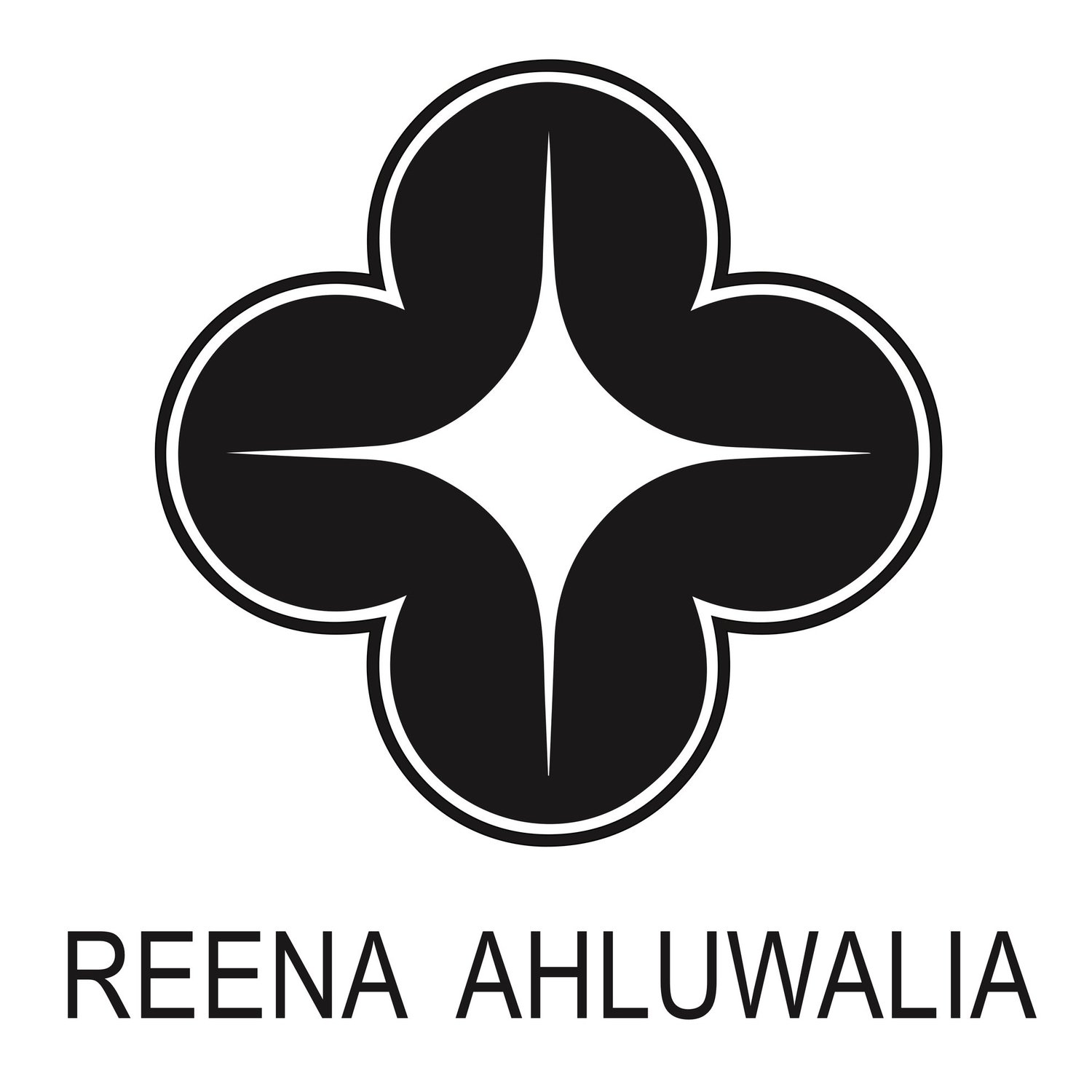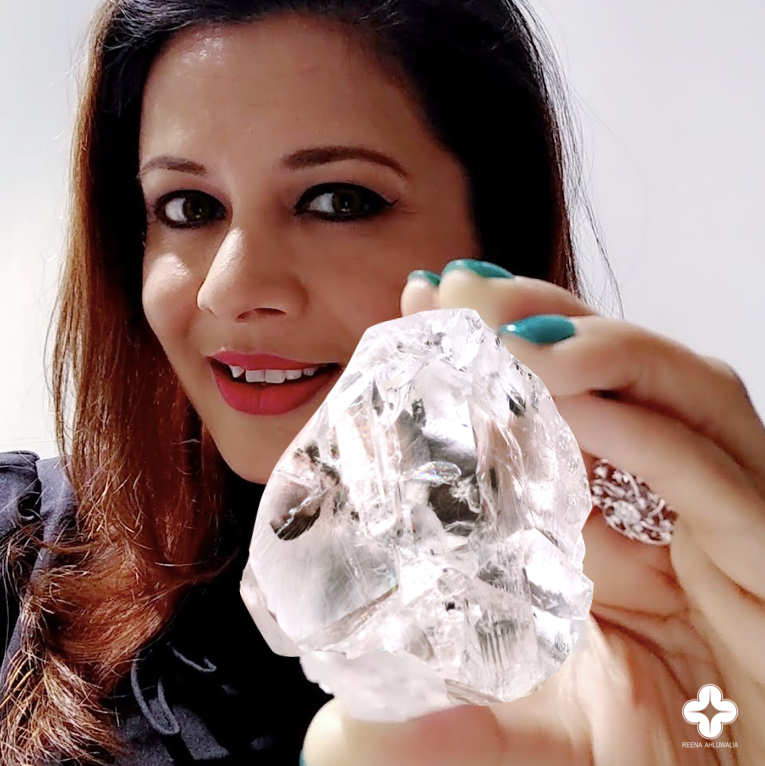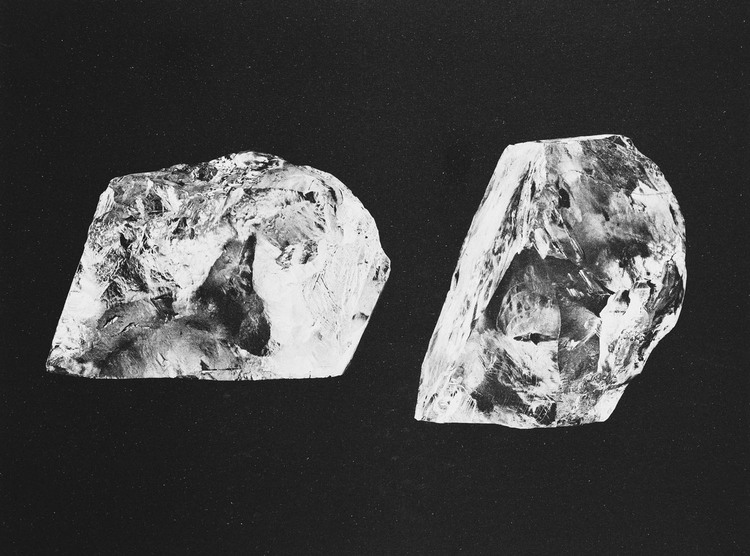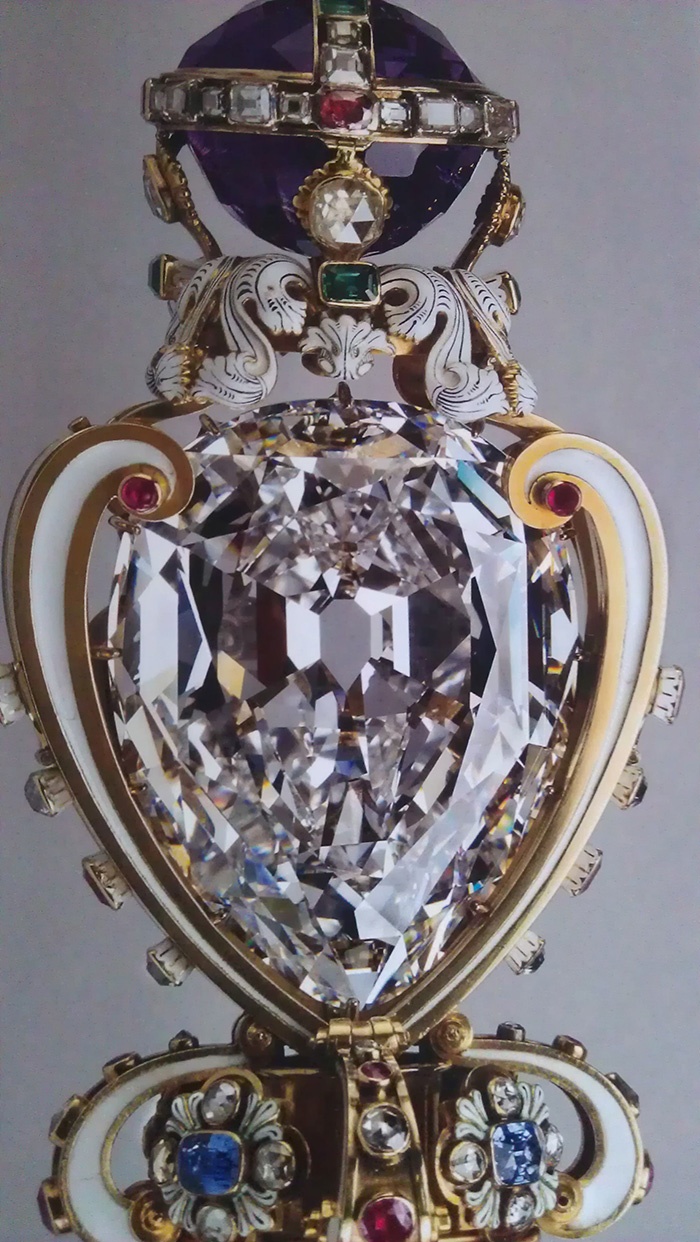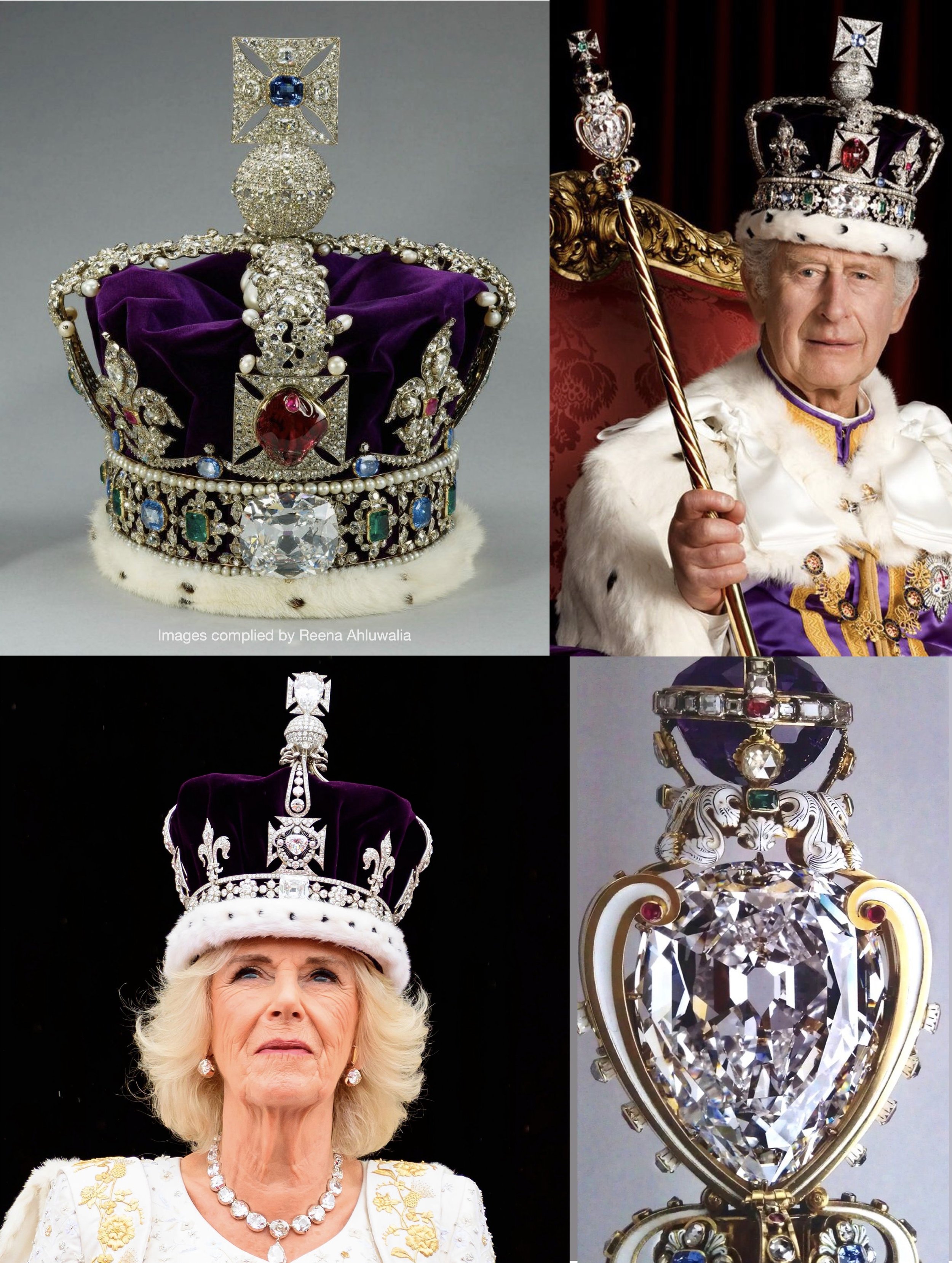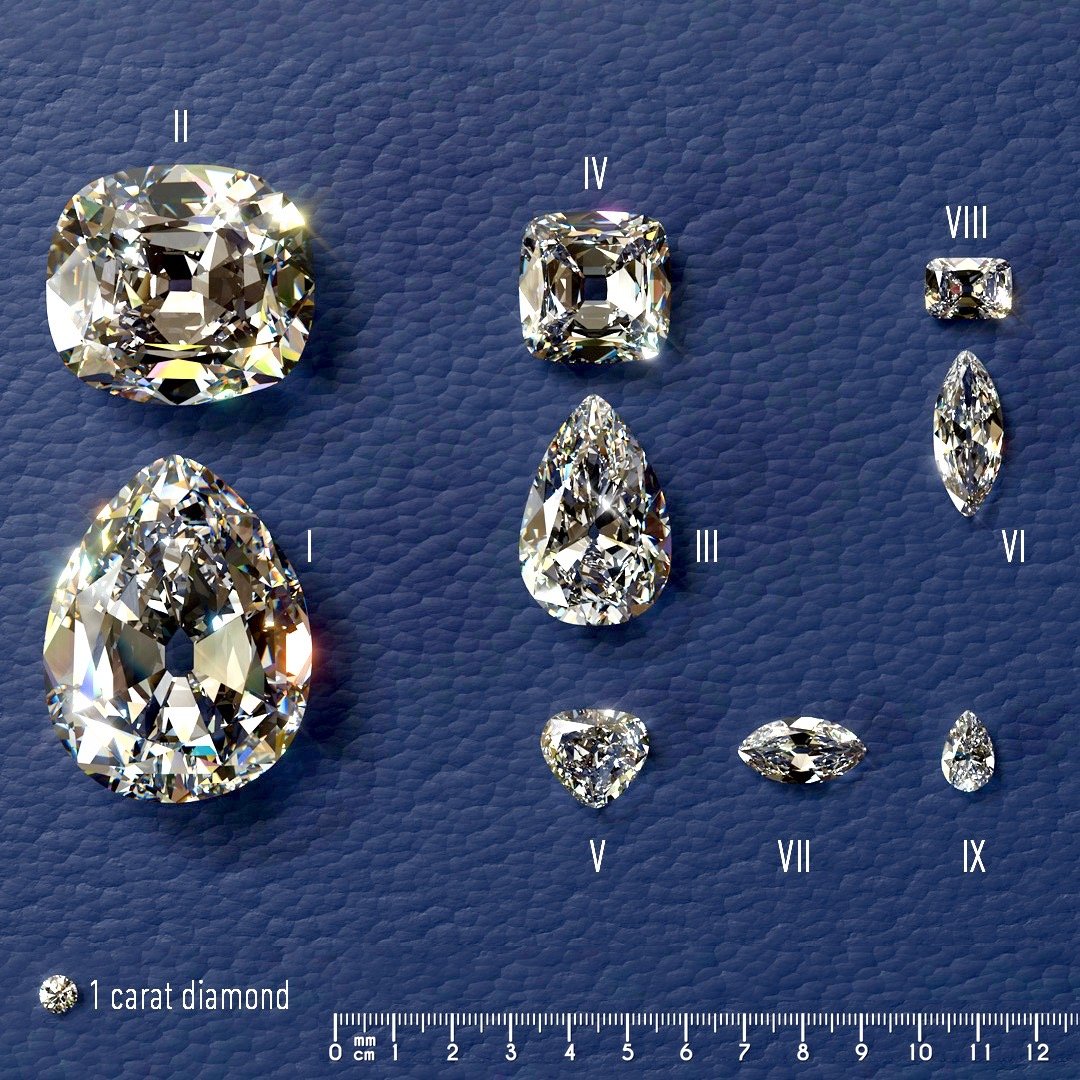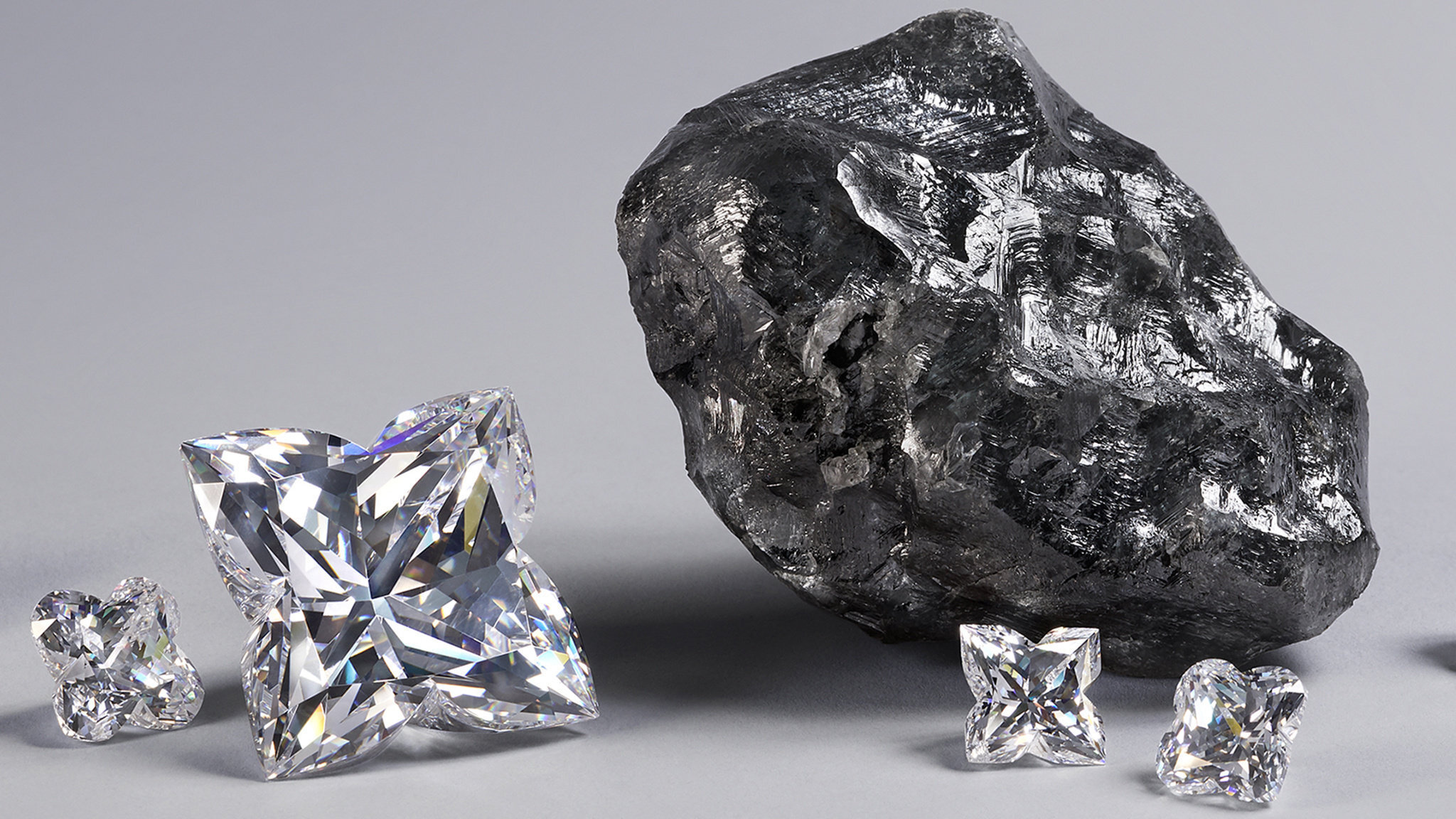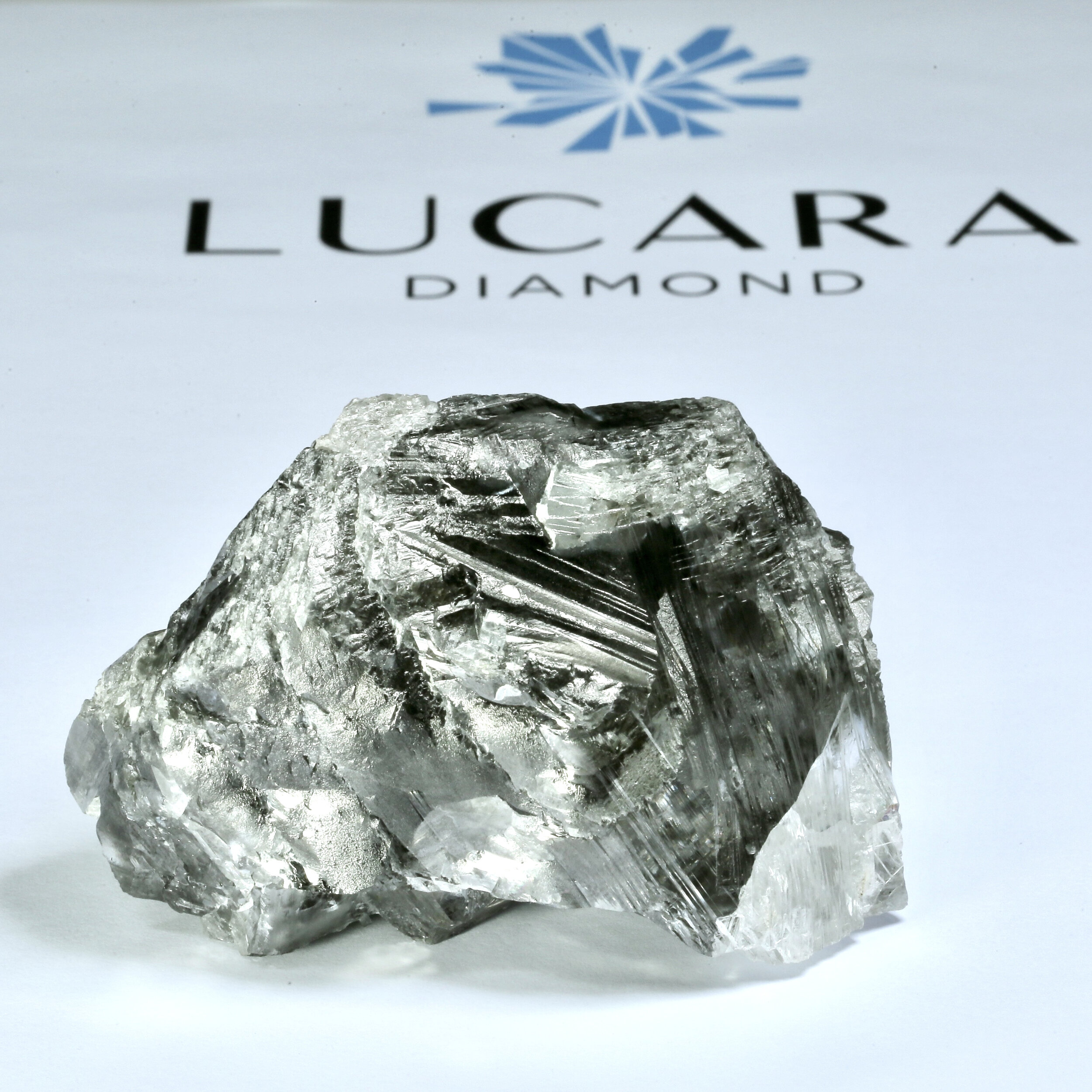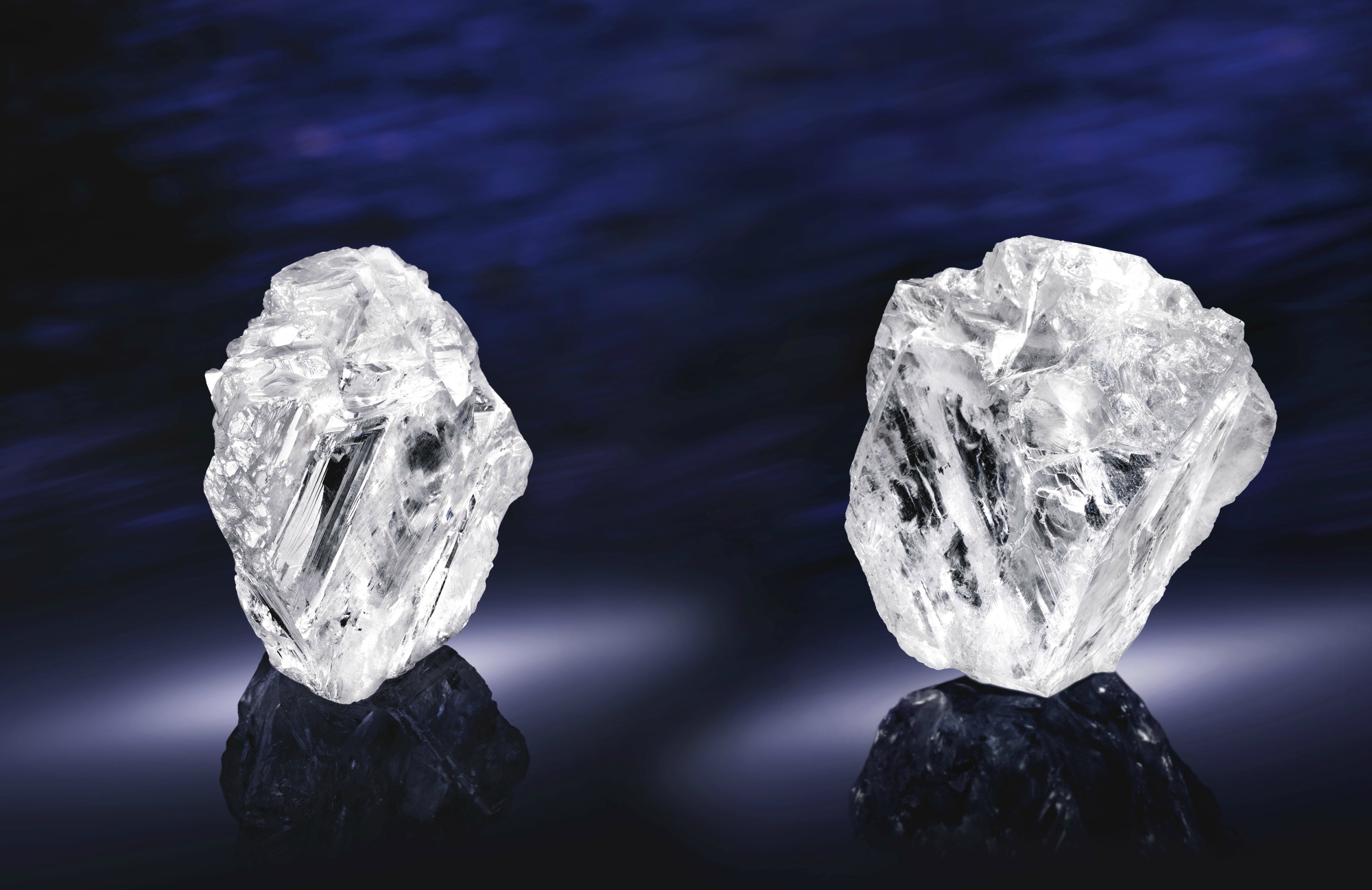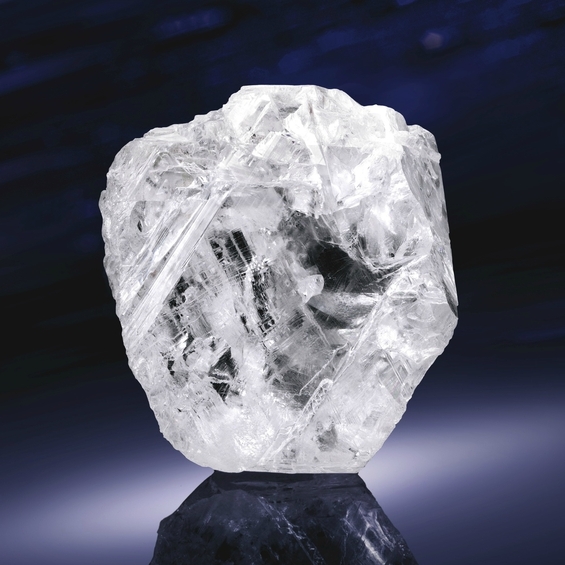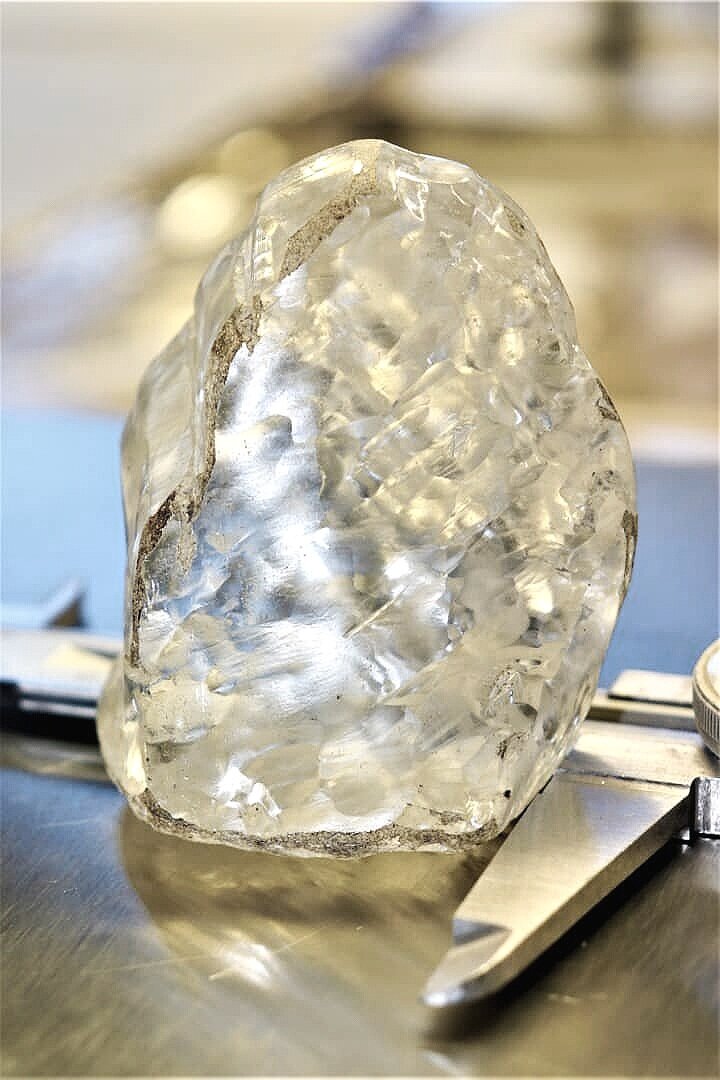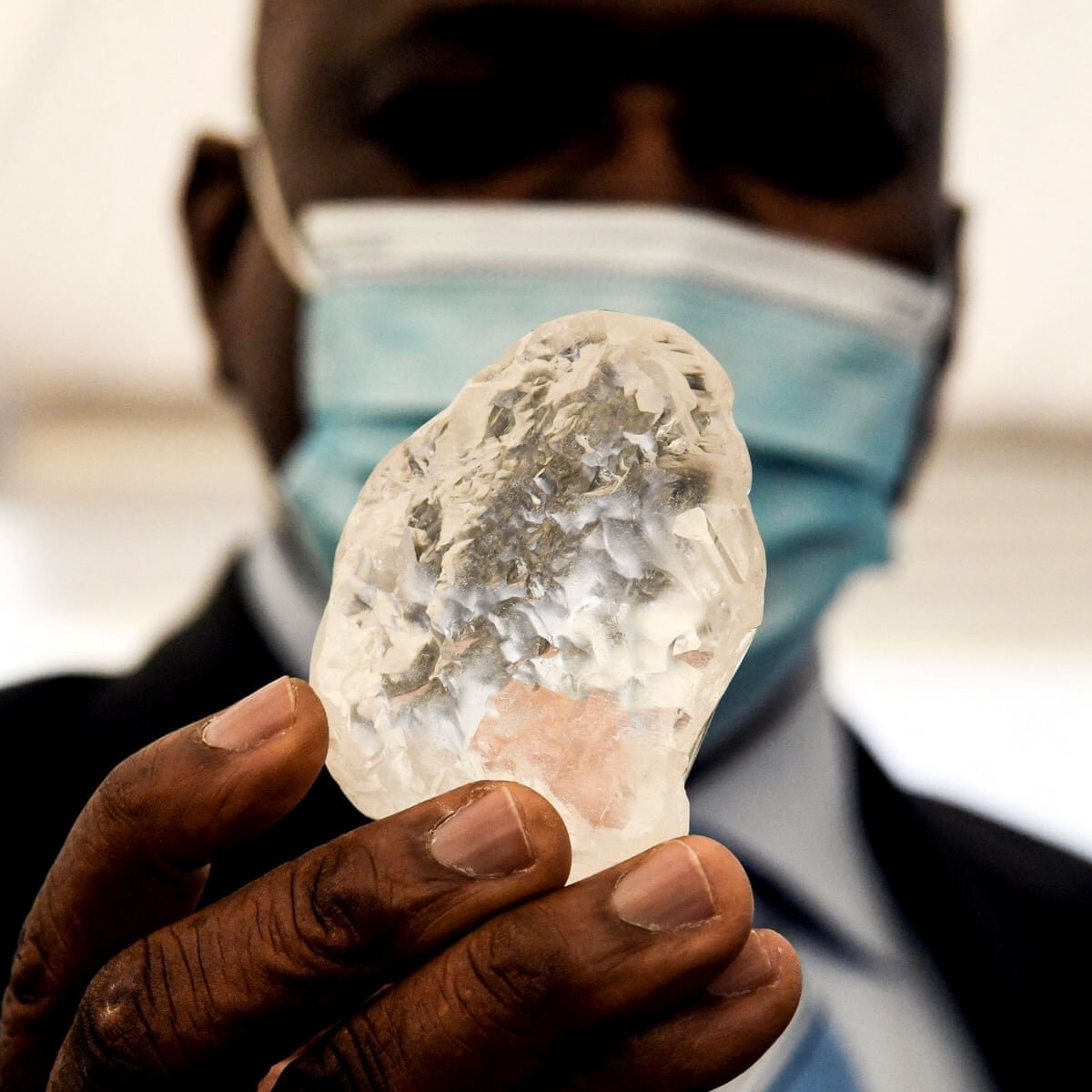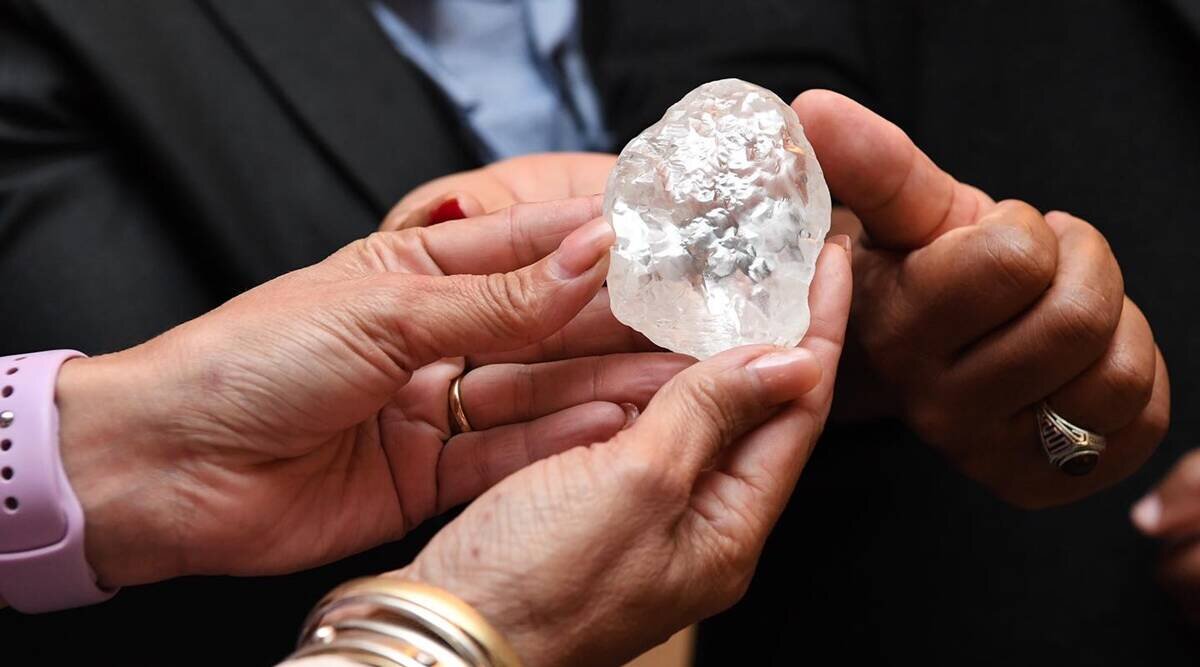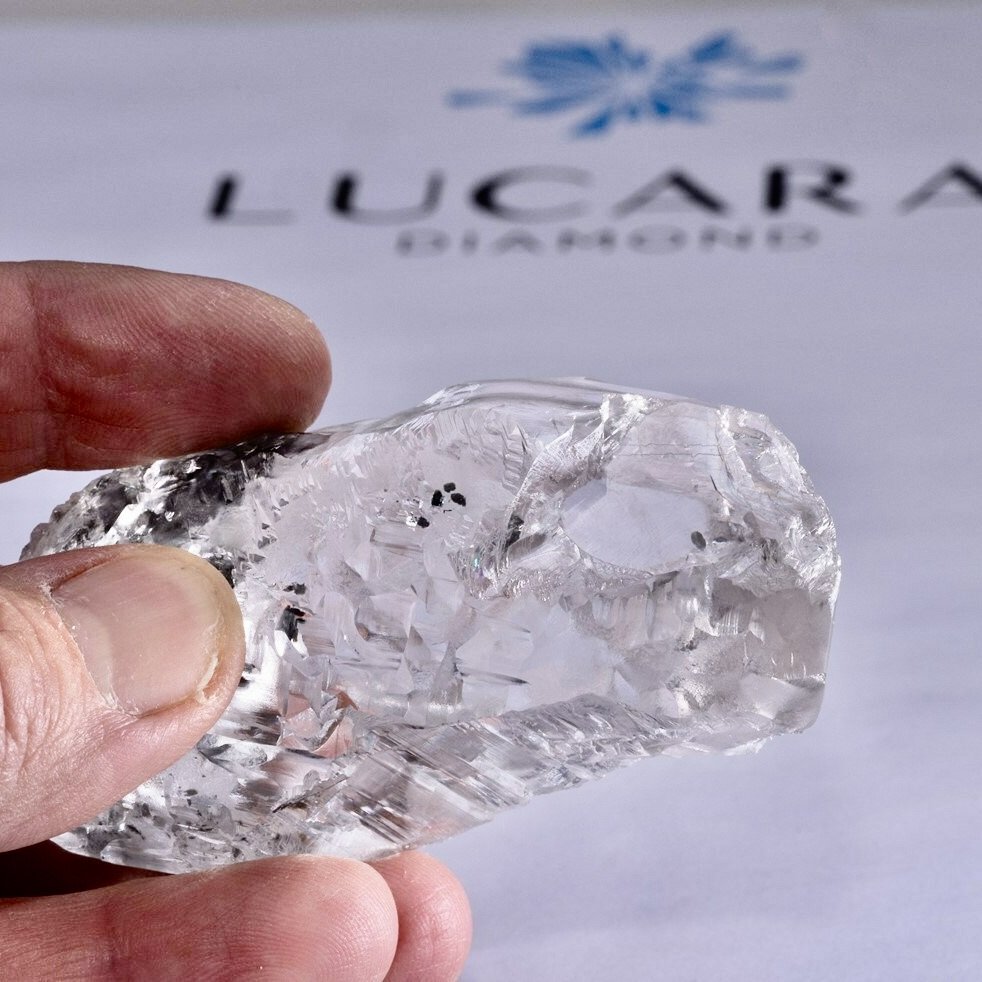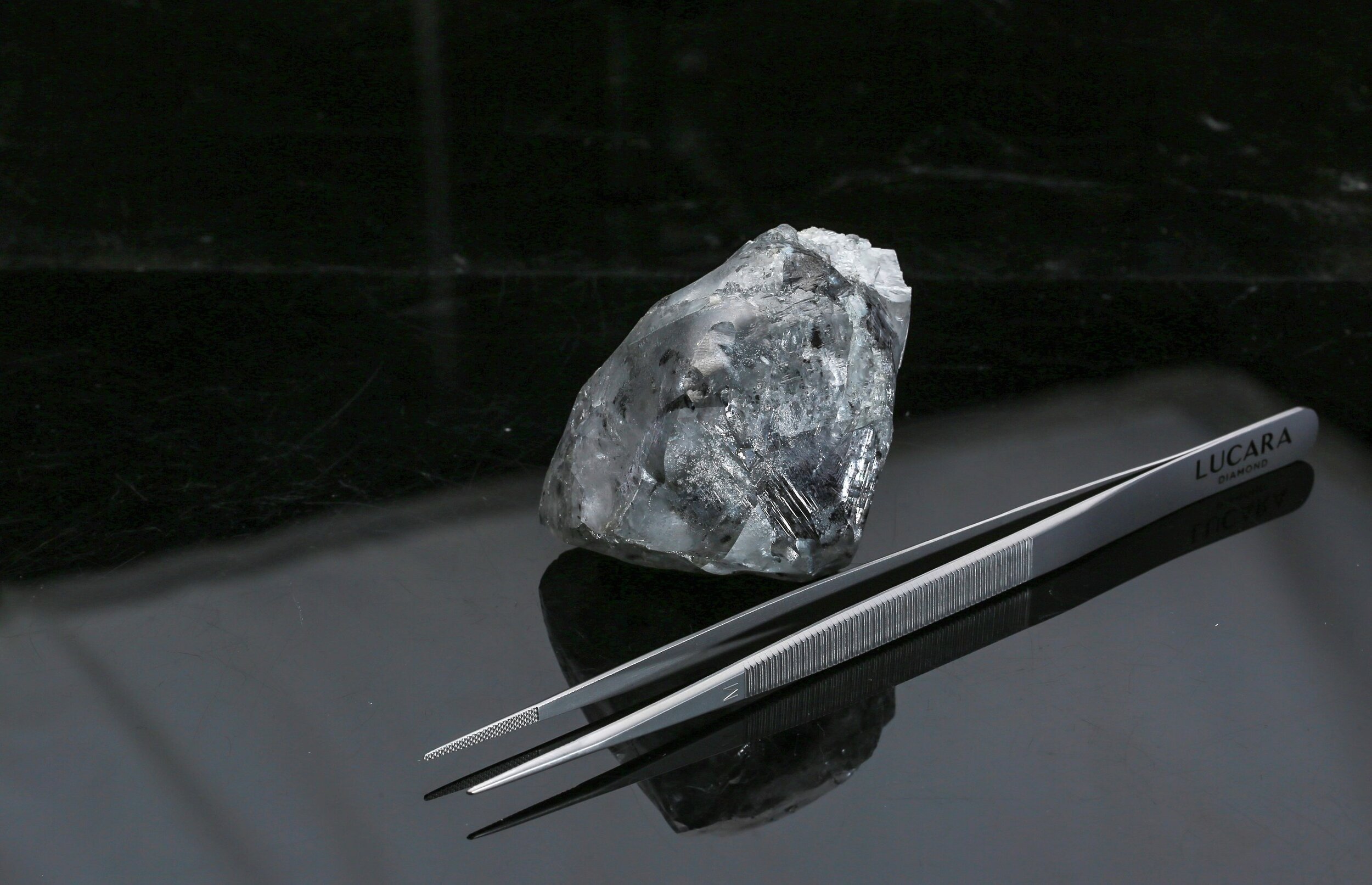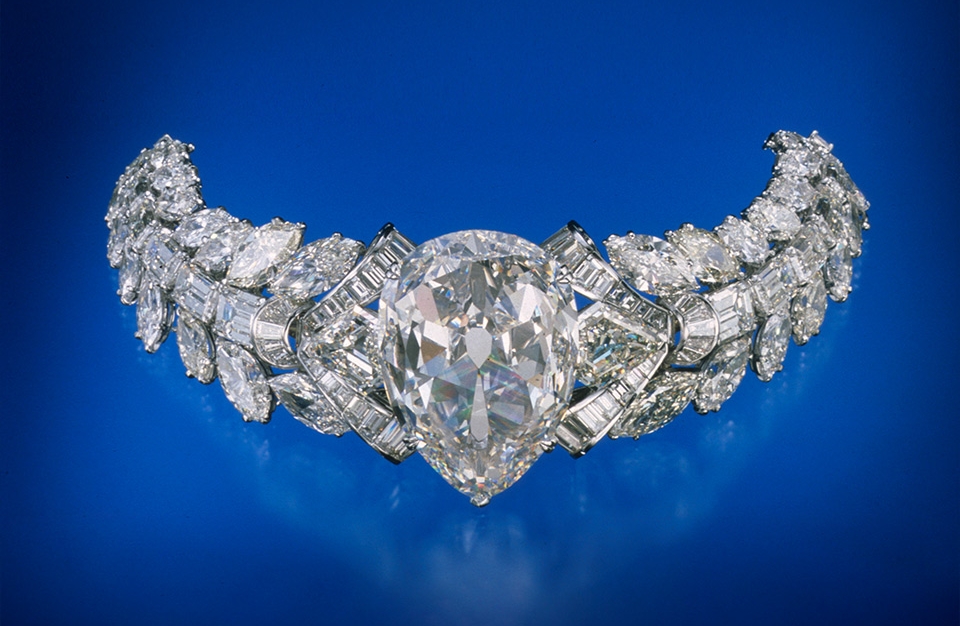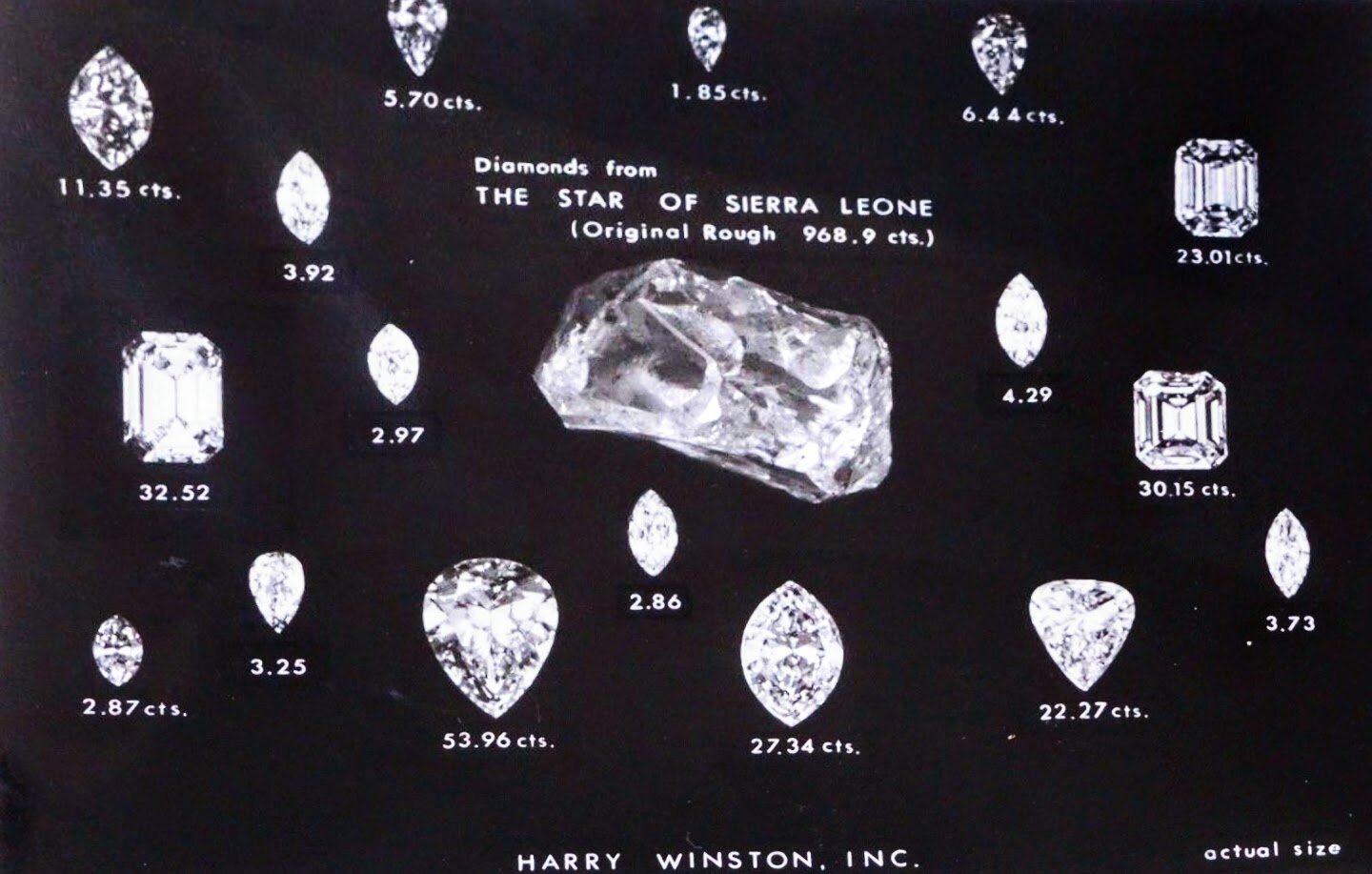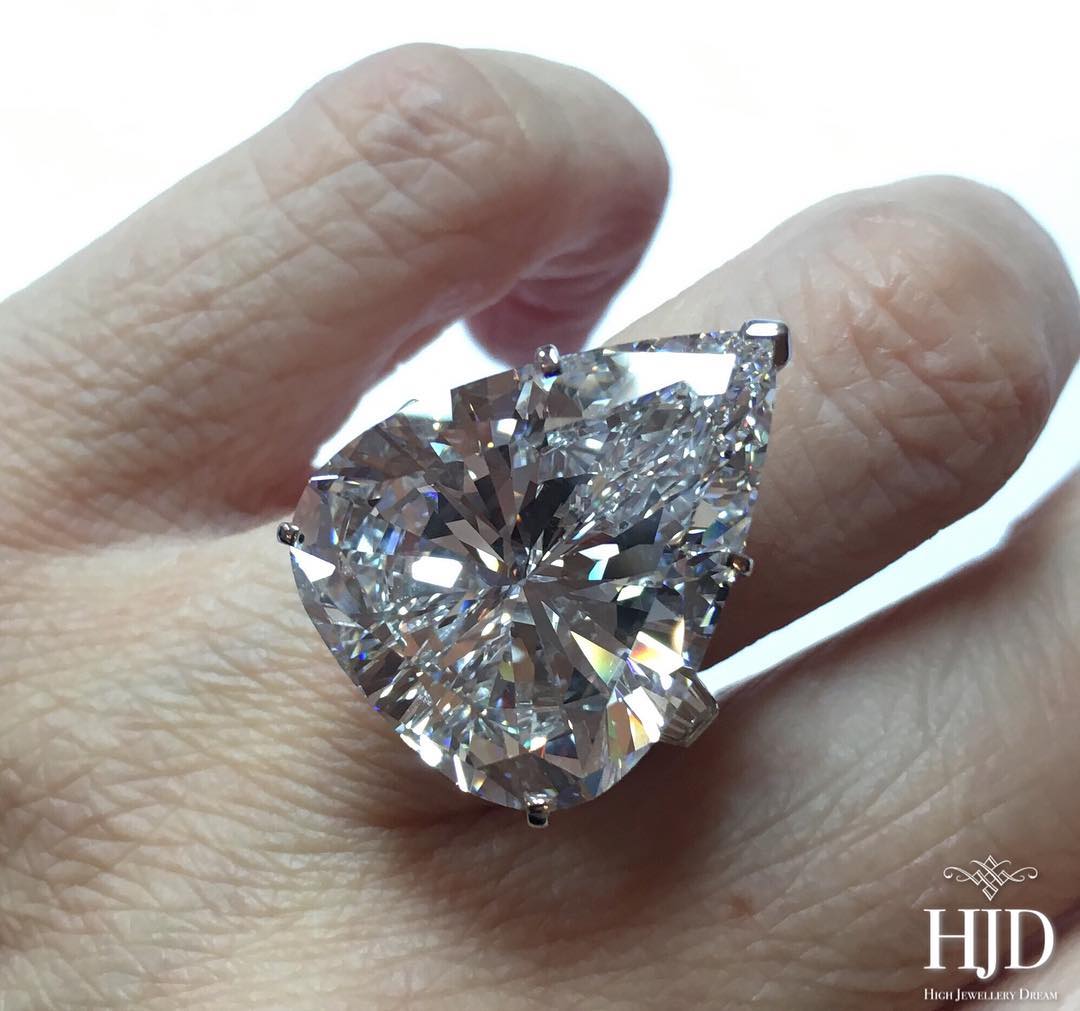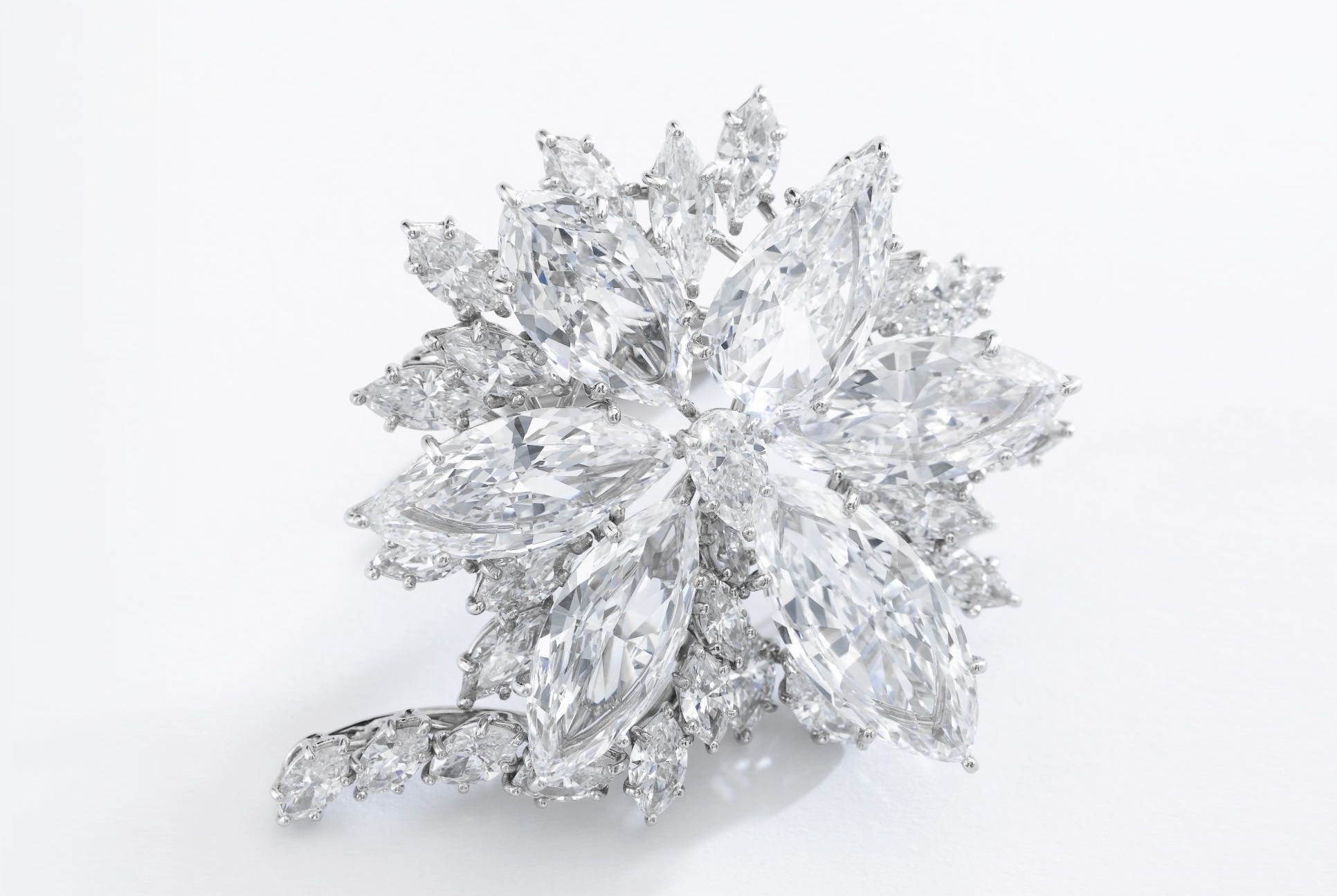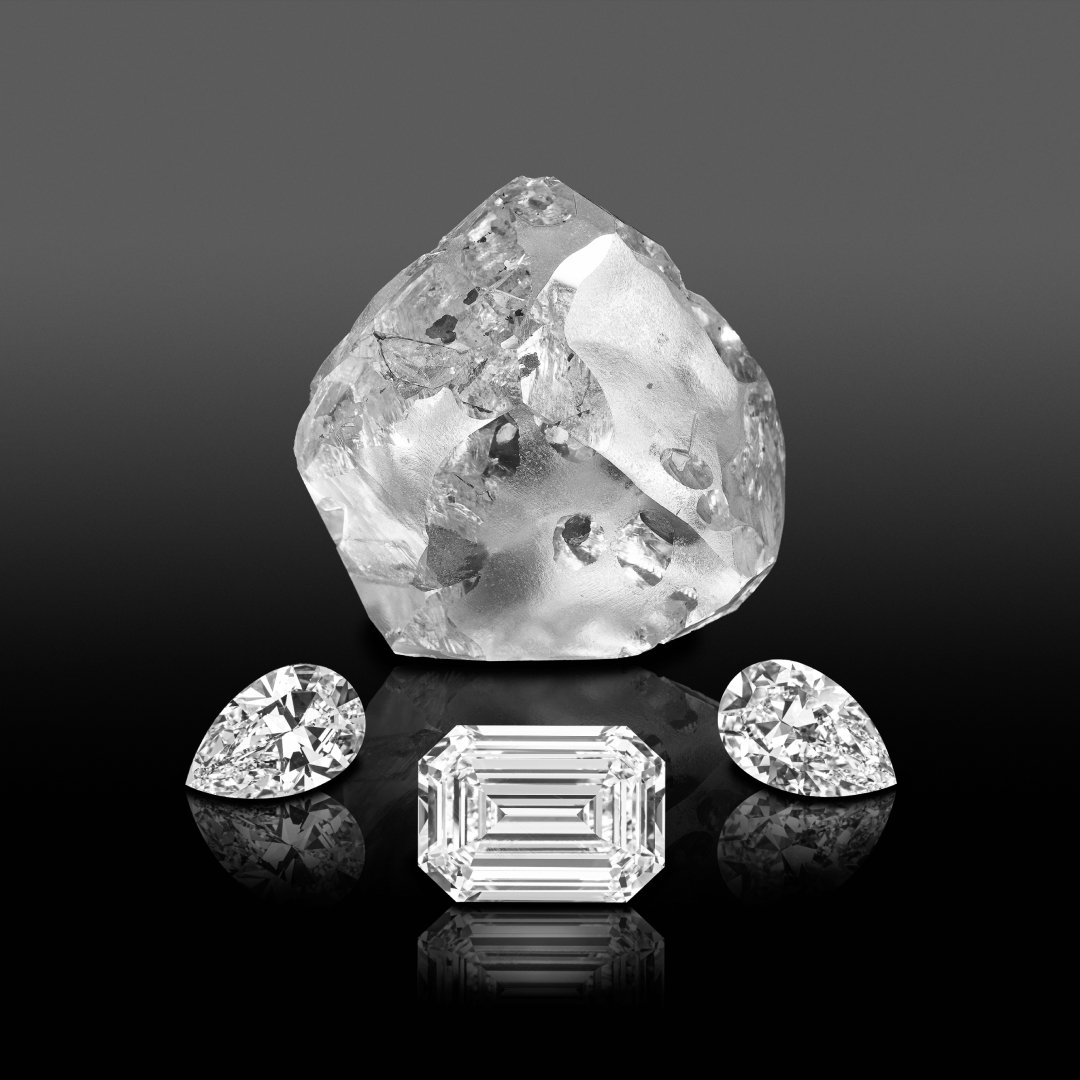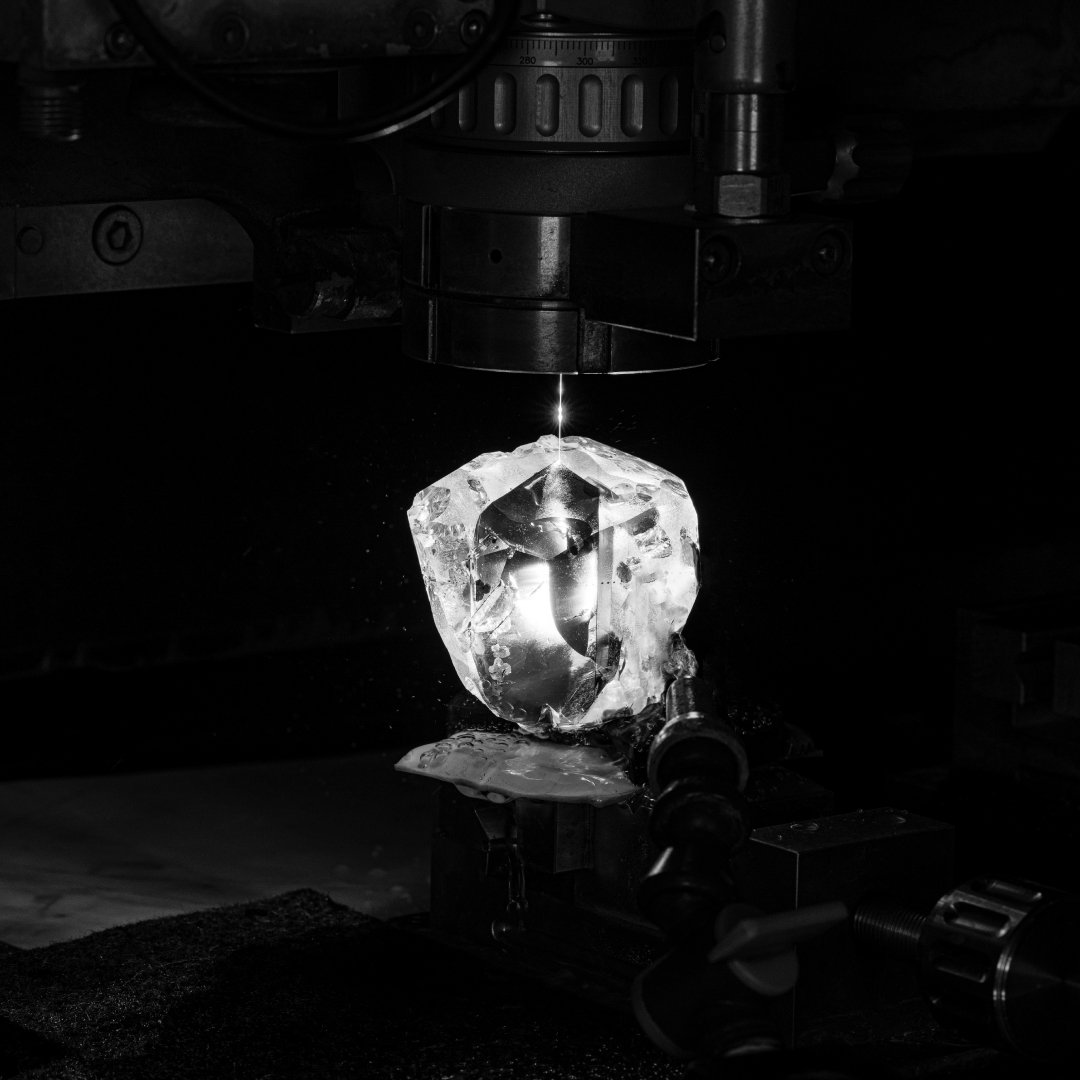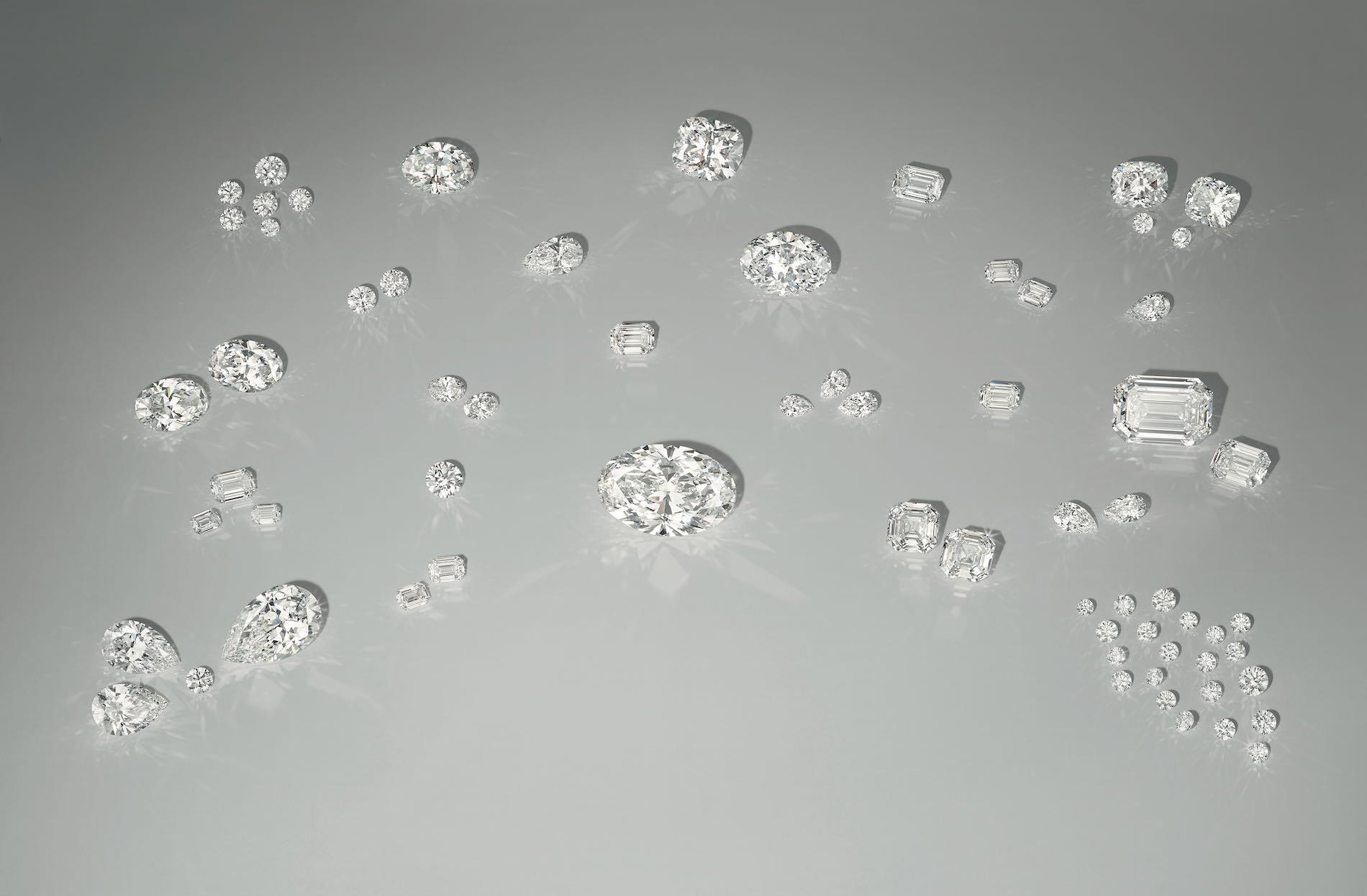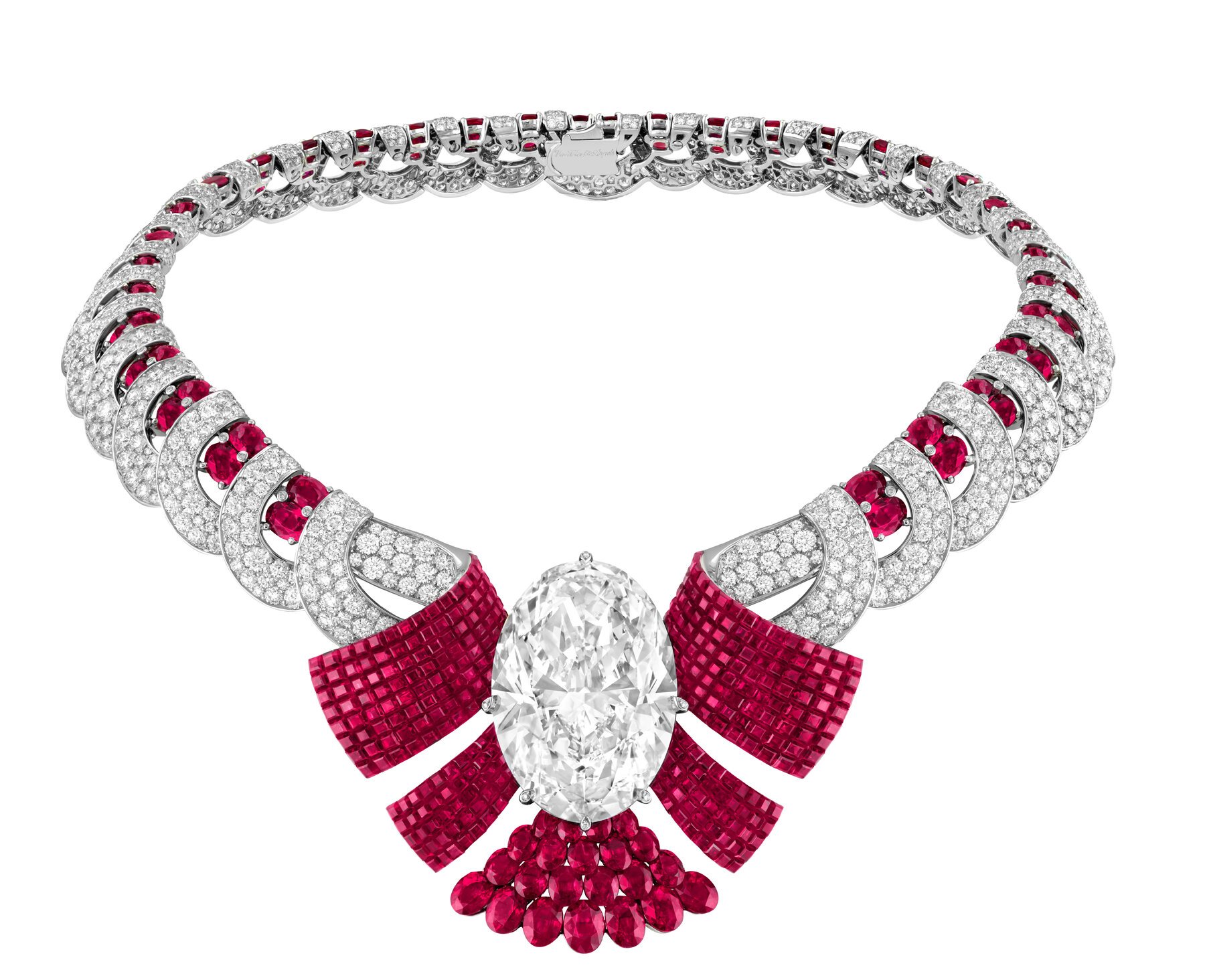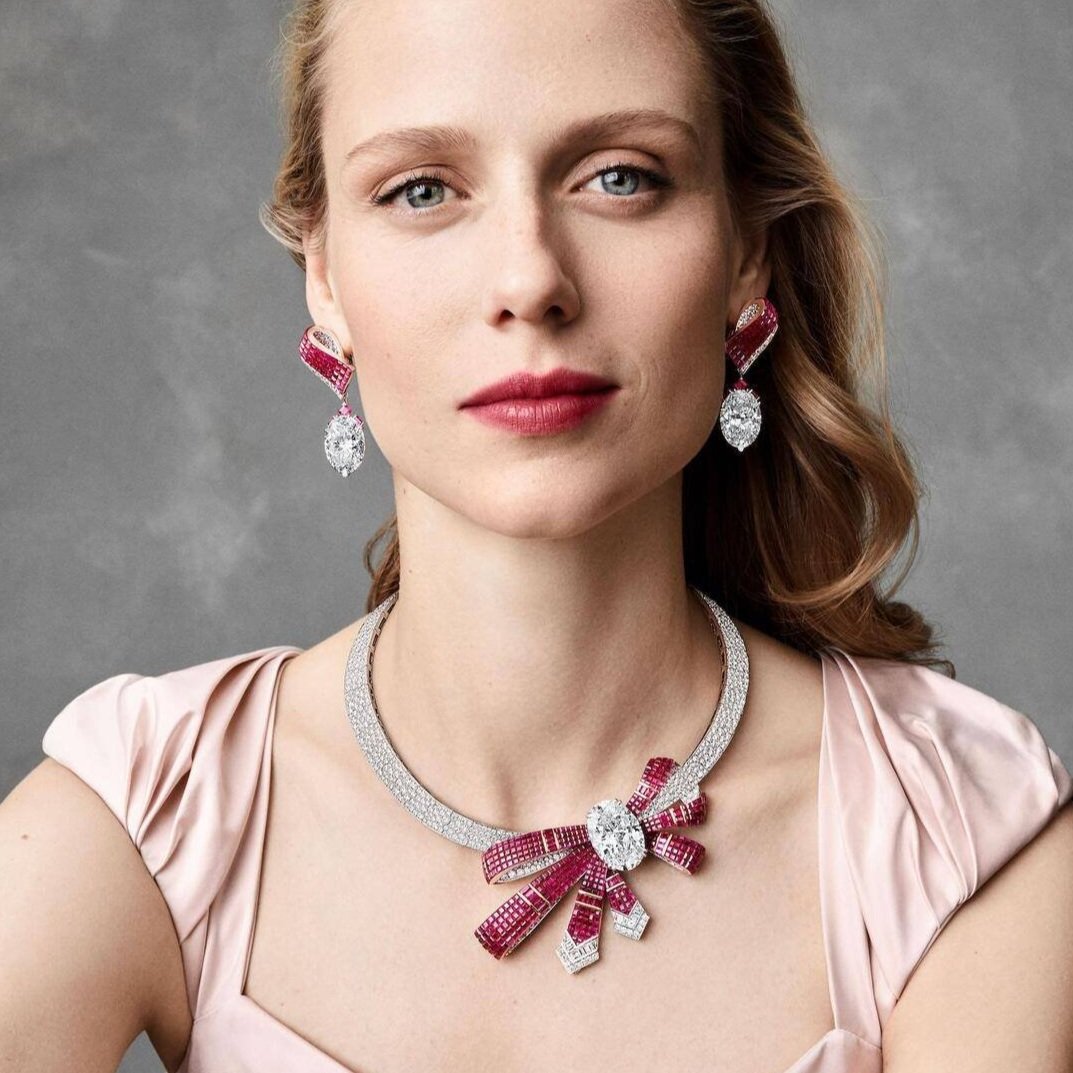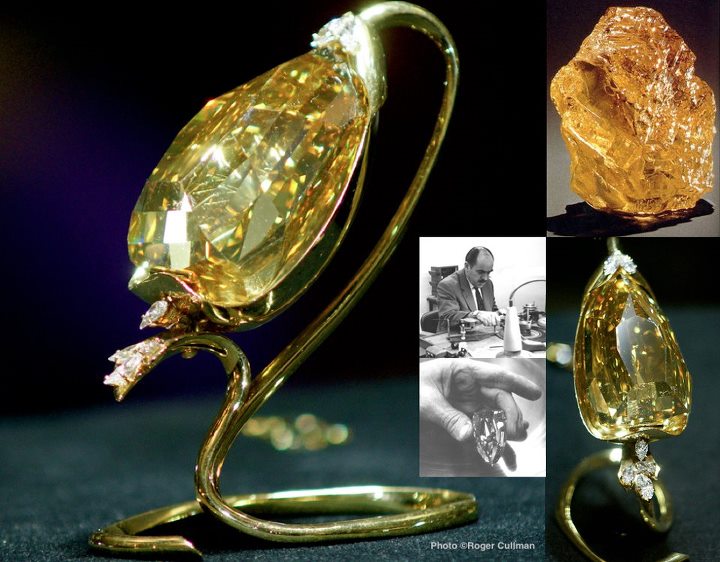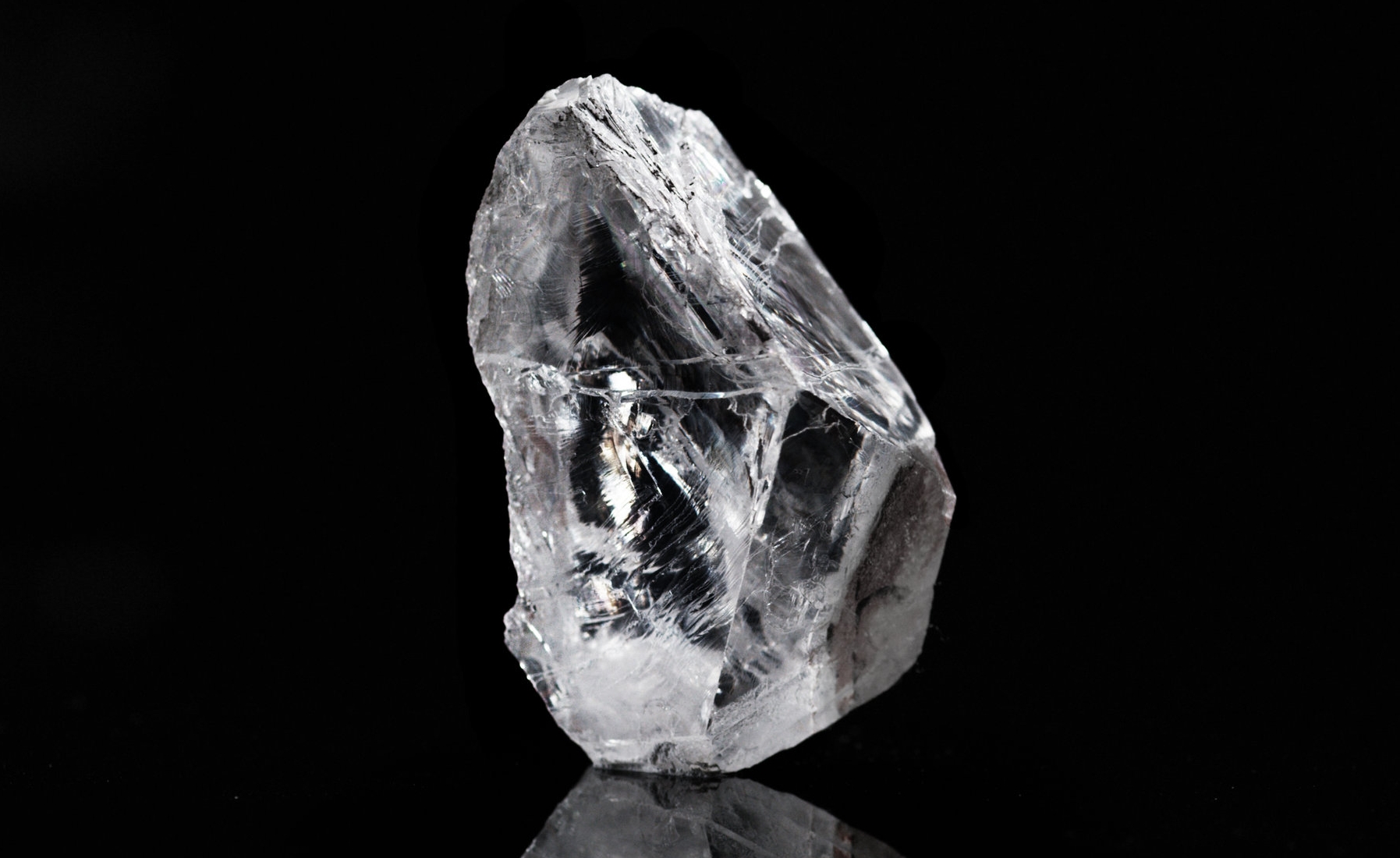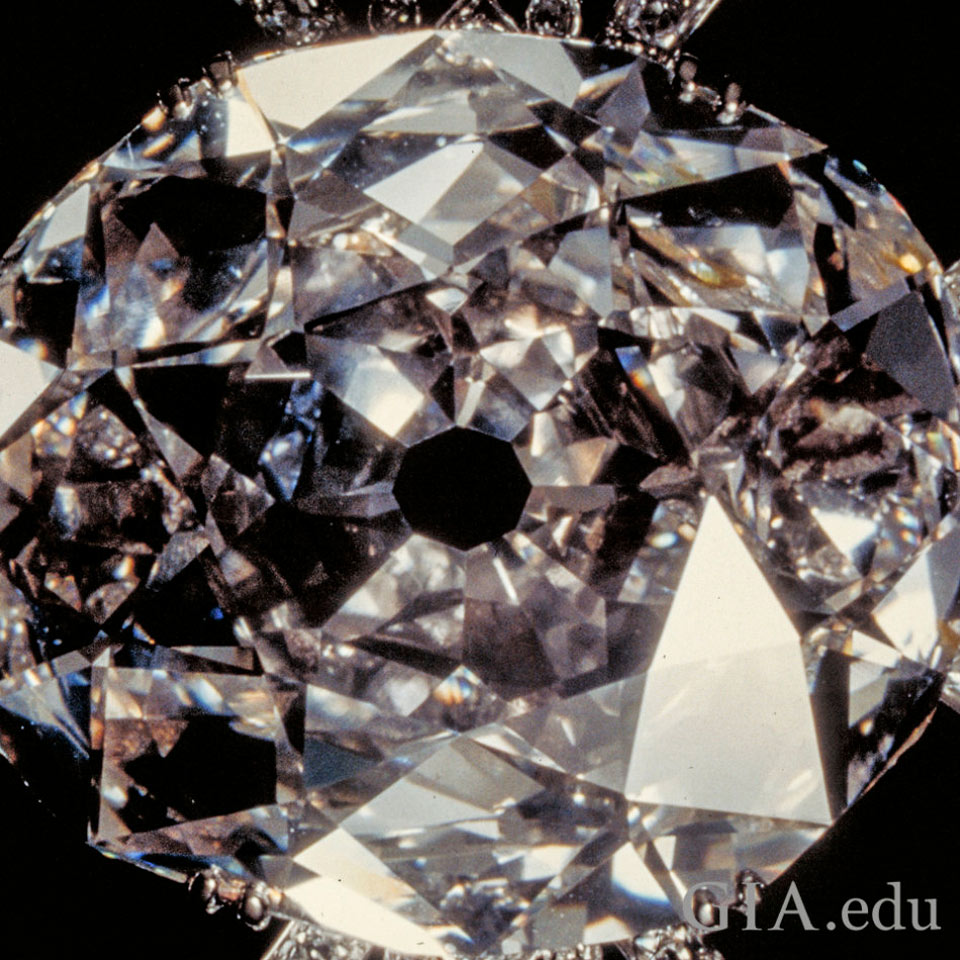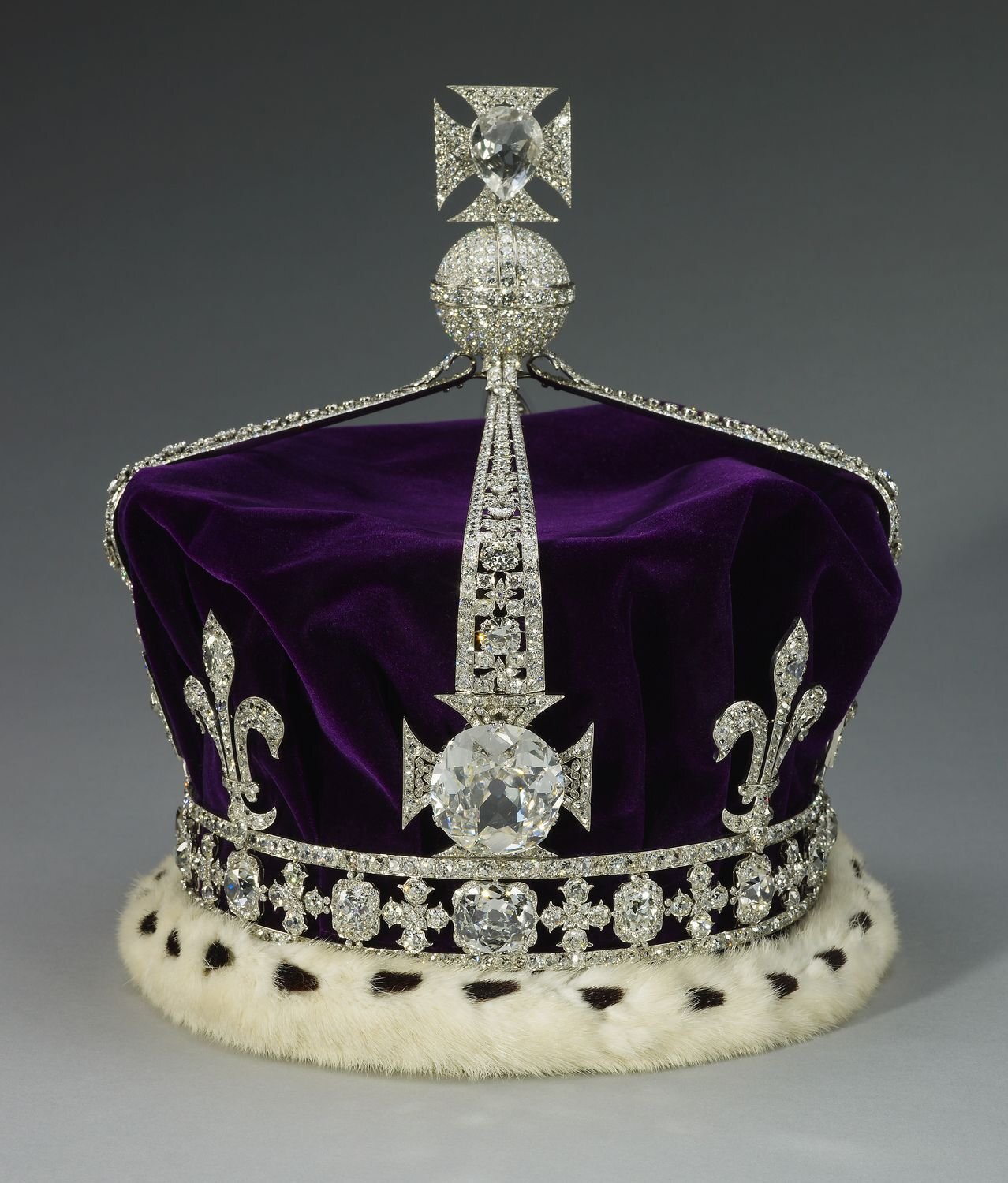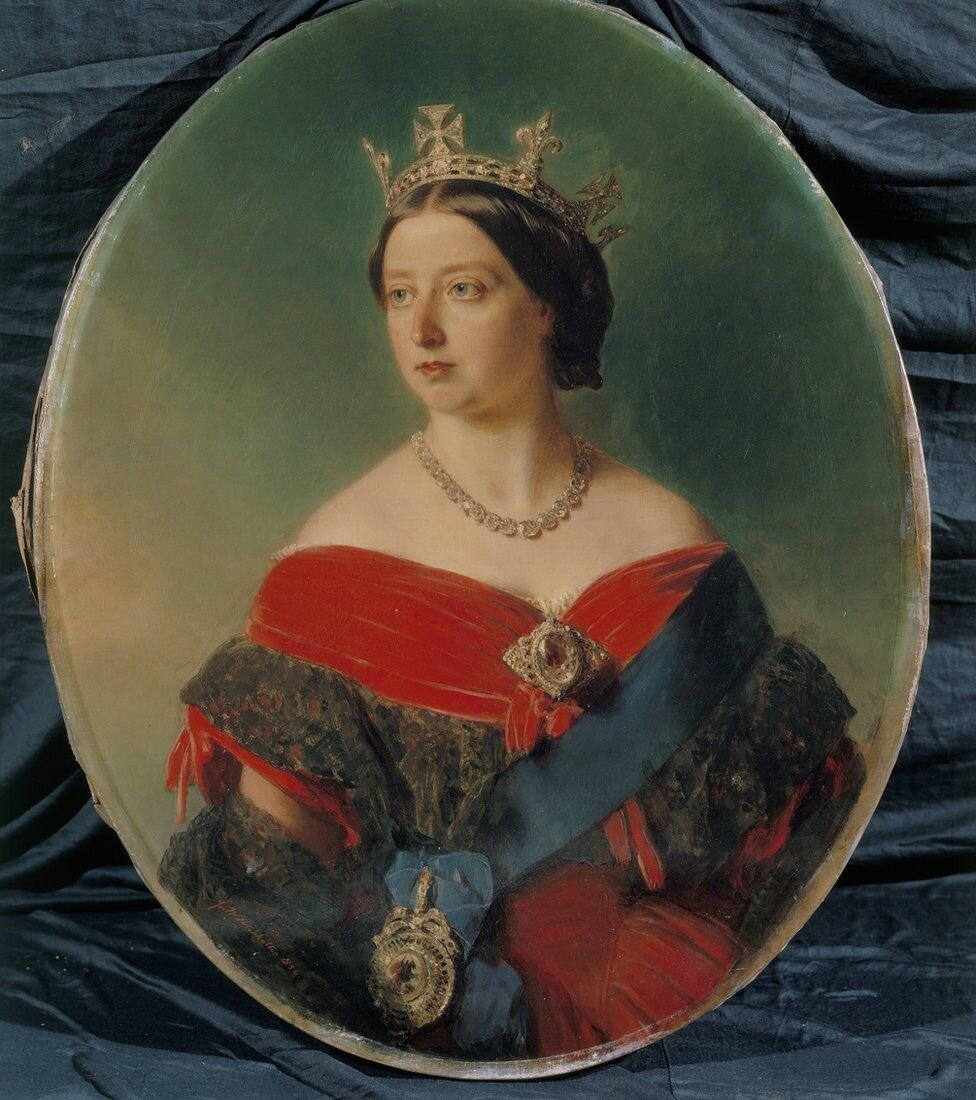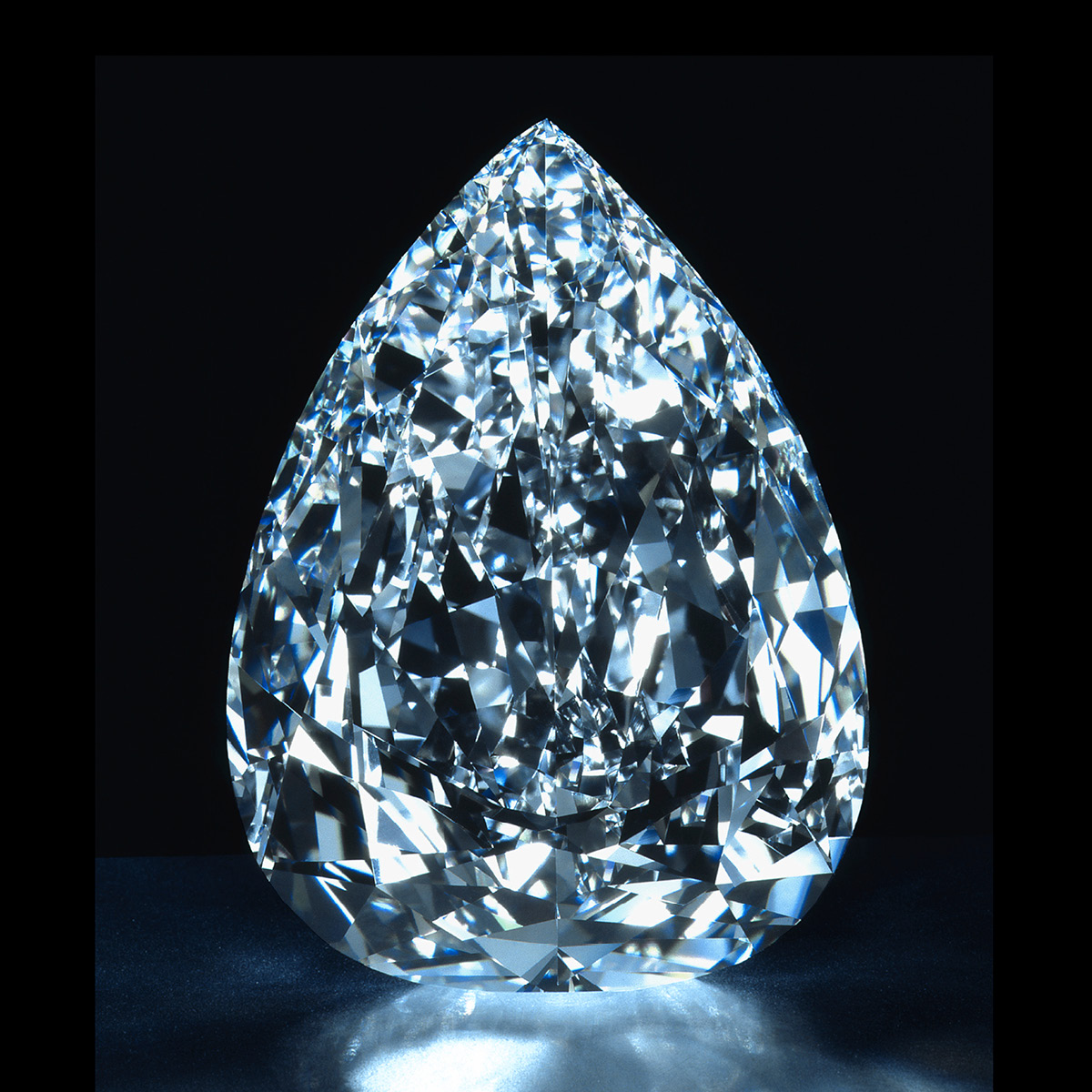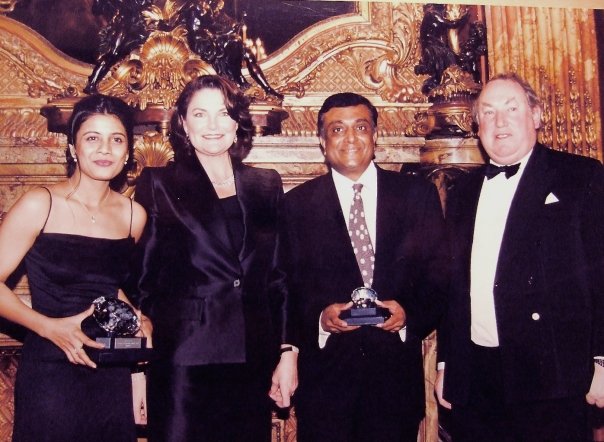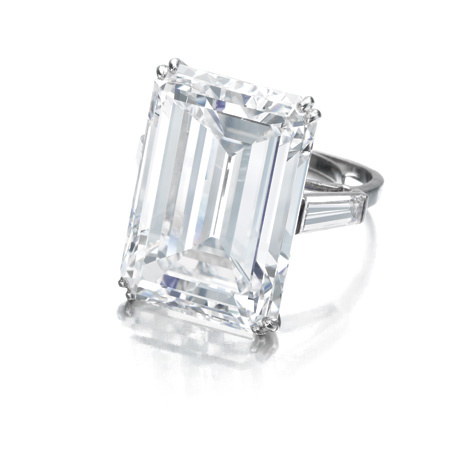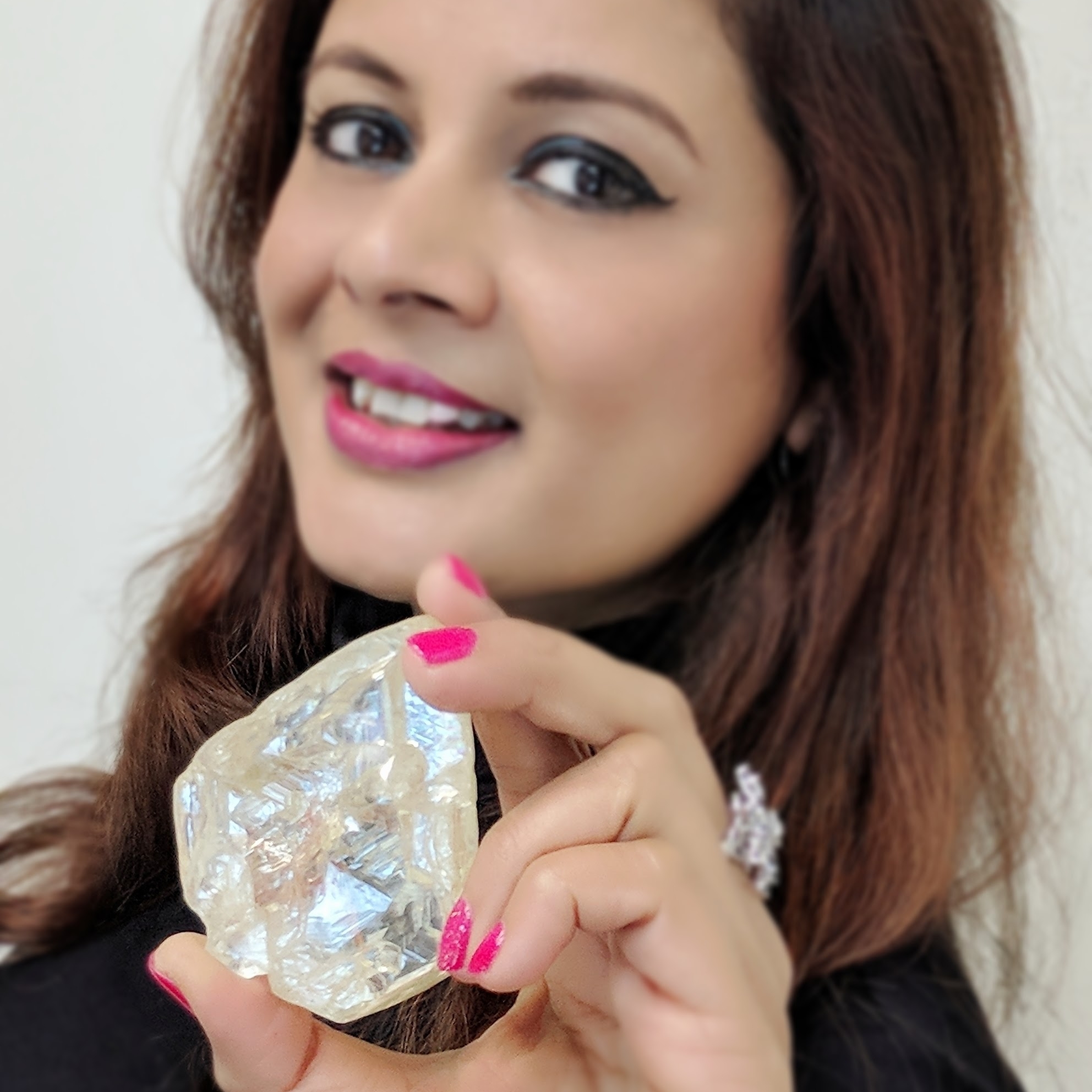Diamond discoveries are what diamond dreams are made of!
Planet earth's geological history is fascinating. Within this history, Diamonds are earth’s oldest preserved minerals and have captured human imagination unlike any other mineral. Diamonds are geological masterpieces, forged by nature, billions of years ago. Until 1725, India was the world's only source of diamonds, followed by discovery of diamond mines in Brazil. Countless diamond discoveries were made, mostly alluvial, till diamond mining became a preferred method of recovering diamonds. Discovered rough diamonds are cut, polished and are then set in your dazzling piece of jewelry.
Did you ever wonder what are some of the most famous and largest gem-quality rough diamonds ever discovered on planet earth? Take a look!
[NOTE: Listed and numbered by ‘Largest Gem-Quality Rough Diamonds’ ever discovered. Includes ‘Variable -quality rough diamonds as well’ by size***. Updated, September 16, 2024. ~ Reena Ahluwalia].
1. Cullinan Diamond - 3106.75 carats
2. Motswedi Diamond. Lucara Diamond Corp. recovered diamond - 2,492 carats
These “Variable-quality” rough diamonds are large! ***
- The Sewelô - 1758 carats. Near gem of variable quality, including domains of high quality white gem.***
- Currently unnamed, Lucara recovered - 1174 carats. A clivage gem of variable quality with significant domains of high-quality white gem material. ***
3. The Lesedi La Rona – 1111 carats
4. Debswana recovered diamond - 1098 carats
5. Seriti Diamond. Lucara Diamond Corp. recovered diamond - 1094 carats
6. Eva Star - 1080.1 carats, Lucara Diamond Corp. recovered diamond
7. Lucara Diamond Corp. recovered diamond - 998 carats
8. The Excelsior Diamond – 995.2 carats
9. The Star of Sierra Leone – 969 carats
10. The Lesotho Legend - 910 carats
11. The Incomparable – 890 carats
12. The Constellation Diamond – 813 carats
13. The Koh-i-Noor Diamond – 793 carats
14. The Millennium Star – 777 carats
15. The Woyie River Diamond – 770 carats
16. The Vargas - 726.6 carats
Here's a closer look at the statistics and images of these historical and legendary diamonds.
Carat Weight: 3,106.75 carats (621.350 g)
Color: Near colourless
Country of origin: South Africa
Mine of origin: Premier Mine
Cut by: Asscher Brothers
Original owner: Premier Diamond Mining Company
Owner: Queen Elizabeth II in right of the Crown (I and II) and as a private individual (III–IX)
Full article on CULLINAN DIAMOND by Reena Ahluwalia.
Recommended read: Historical and gemmological analysis of Cullinan I & II by Russell Shor and Kenneth Scarratt.
Reena Ahluwalia holds the originally-made-replica of the Cullinan Diamond at the headquarters of Royal Asscher Diamond Company in Amsterdam. Image: Reena Ahluwalia
Cullinan Diamond. Photograph showing two models (replicas) of the original stone. The Cullinan Diamond was discovered in South Africa in 1905 and presented to King Edward VII in 1907. It was sent to Asschers (presently, Royal Asscher Diamond Company) of Amsterdam to be cleft in 1908. Image: Royal Collection © Her Majesty Queen Elizabeth II
The Cullinan diamond was presented to Great Britain’s King Edward VII who asked the Asscher brothers to cleave it. In 1908, Joseph Asscher cut the stone into 9 large stones and 42 small stones. Here are the replicas of Cullinan polished diamonds. Image: Royal Asscher Archives / Image taken by Reena Ahluwalia
The Imperial State Crown. Set in The Imperial State Crown is a magnificent 317.4 carat Cullinan II diamond, also known as the Lesser Star of Africa, was cut by the Asscher Diamond Company. Great Britain's Crown Jewels. Image: Royal Collection © Her Majesty Queen Elizabeth II
The Sovereign's Sceptre with Cross that is set with the largest of the Cullinan diamonds known as the Star of Africa or Cullinan I that weighs 530.2 carats. The Sceptre is part of the Crown Jewels. Image via: The Jewellery Editor
The Cullinan diamonds in the British Crown Jewels. King Charles III and Queen Camilla’s Coronation.
King Charles III with the Imperial State Crown. Set in The Imperial State Crown is a magnificent 317.4 carat Cullinan II diamond, also known as the Lesser Star of Africa. The Sovereign's Sceptre with Cross is set with the largest of the Cullinan diamonds known as the Star of Africa or Cullinan I that weighs 530.2 carats. The Sceptre is part of the Crown Jewels and the coronation ceremony.
Queen Consort Camilla wore Queen Mary's Crown with the Cullinan III, IV and V diamonds that were part of Queen Elizabeth's personal jewelry collection. What was removed from the crown was world's most famous and controversial diamond - the legendary Koh-i-Noor. Queen Camilla was also wearing the Coronation necklace made for Queen Victoria by Garrard. 2023.
Shown here are the replicas of the major Cullinan diamonds with a one carat (ct) diamond (bottom left) for scale. They were cut from the 3,106 ct Cullinan diamond crystal found in South Africa in 1905. This record-setting crystal produced nine major gems and 96 smaller diamonds. The two largest, the 530.20 ct Cullinan I and the 317.40 ct Cullinan II, are part of the British Crown Jewels, while the rest of the major diamonds (Cullinan III-IX) were privately owned by Queen Elizabeth II. In 2023, the Queen Consort Camilla wore Queen Mary's Crown, which features 2,200 diamonds and was worn by Queen Mary when she took part in the coronation alongside her husband, King George V, in 1911. As a tribute to the late Queen Elizabeth, the headpiece was reset with the Cullinan III, IV and V diamonds, which are part of the famous Cullinan diamond, the largest ever found. The jewels were a part of the late monarch's personal jewelry collection and were frequently worn as brooches. Image: GIA
2. Motswedi Diamond. Lucara Diamond, 2,492 carat rough diamond
Carat Weight: 2,492 carats
Colour: Colourless/white, Type IIa
Cut: Rough diamond
Country of origin: Botswana
Mine of origin: Karowe Mine
Discovered: 21 August 2024
Original owner: Lucara Diamond
Motswedi, Lucara Diamond Corp. recovered diamond - 2,492 carats. In 2024, Lucara announced the recovery of an exceptional 2,492 carat diamond from its Karowe Diamond Mine in Botswana. This remarkable find, one of the largest rough diamonds ever unearthed, was detected and recovered by the Company's Mega Diamond Recovery (“MDR”) X-ray Transmission (“XRT”) technology, installed in 2017 to identify and preserve large, high-value diamonds. This 2024 recovery joins an impressive roster of other significant finds from the mine, including the 1,758 carat Sewelô and the 1,109 carat Lesedi La Rona. Image: Lucara.
THE SEWELÔ DIAMOND (A notable diamond, the Sewelô is near-gem of variable quality)***
Carat Weight: 1,758-carat
Color: Near gem of variable quality, including domains of high quality white gem
Country of origin: Karowe mine, Botswana
Cut by: The polishing will take place via a partnership with Belgium’s HB Company
Original owners: Lucara Diamond Corp., HB Antwerp
Owner: Louis Vuitton
The 1758 carat, Sewelô Diamond. Image credit: FT / Lucara / Louis Vuitton
Lucara discovered the Sewelô rough at its Karowe mine in April 2019, making it to be the largest diamond in Botswana’s history, surpassing the 1,109-carat Lesedi La Rona it extracted at the same deposit in 2015. The company called the stone Sewelô, meaning “rare find” in the local Setswana language, following a public naming contest. (Source: Rapaport)
UNNAMED 1,174 CARAT LUCARA DIAMOND (Note: A notable diamond by size, the 1,174 carat diamond is of variable quality) ***
Carat Weight: 1,174-carat .
Color: A clivage gem of variable quality with significant domains of high-quality white gem material. Dimensions: 77 x 55 x33 mm
Country of origin: Karowe mine, Botswana
Cut by: The polishing will take place via a partnership with Belgium’s HB Antwerp
Original owners: Lucara Diamond Corp., HB Antwerp
Owner: ———
The 1,174 carat diamond represents the third +1,000 carat diamond recovered by Lucara from the South Lobe of the AK6 kimberlite since 2015 including the 1,758 carat Sewelô and 1,109 carat Lesedi La Rona. The 1,174.76 carat diamond was recovered in the MDR (Mega Diamond Recovery) XRT circuit. The diamond, measuring 77x55x33mm, is described as a clivage gem of variable quality with significant domains of high-quality white gem material. Image: Lucara Diamond Corp. June 2021
3. THE LESEDI LA RONA DIAMOND
Carat Weight: 1,111 carats (222.2 g; 7.14 oz)
Dimensions: 65 mm × 56 mm × 40 mm (2.6 in × 2.2 in × 1.6 in)
Colour: Colourless/white, Type IIa
Cut: Rough diamond
Country of origin: Botswana
Mine of origin: Karowe Mine
Discovered: 16 November 2015
Original owner: Lucara Diamond
Owner: Graff Diamonds
The Lesedi La Rona is a Type IIA diamond. Type IIa diamonds are the most valued and the purest type of diamonds. They contain either very little or no nitrogen atoms in the crystal structure. White stones are exceptionally colorless and fancy colored diamonds are often found with a brown, purple, blue, or pink tone. They represent only 1% - 2% of all mined diamonds in the world. Learn about TYPE IIA DIAMONDS.
At 1111-carats, the Lesedi La Rona is world's second largest diamond ever discovered (as of 2018). Image: Lucara Diamonds
The Lesedi La Rona is a Type IIA diamond. Type IIa diamonds are the most valued and the purest type of diamonds. They contain either very little or no nitrogen atoms in the crystal structure. Image: Lucara Diamonds
The 1111-carat diamond was named Lesedi La Rona which means "Our Light" in the Tswana language. Image: Lucara Diamonds
4. Currently unnamed. 1098-carat rough diamond.
Carat Weight: 1098 carats
Dimensions: 73 x 52 x 27 mm
Colour: Colourless/white. Rough diamond
Country of origin: Botswana
Mine of origin: Jwaneng Mine
Discovered: 1 June 2021.
Original owners: Debswana Diamond, a joint venture between De Beers and the government of Botswana
Debswana Diamond, a joint venture between De Beers and the government of Botswana, found a 1,098-carat stone, one of only four rocks over 1,000 carats ever unearthed (as of June 2021), and the biggest by the company since it began operations five decades ago. The yet to be named massive stone was picked on June 1 at Jwaneng, the world’s richest diamond mine by value.
The 1098-carat rough diamond was recovered on June 1, 2021 from the south kimberlite pipe at Jwaneng mine. Image: Debswana Diamond Company.
Botswana’s president, Mokgweetsi Masisi, inspects Debswana’s 1098-carat diamond. Photograph: Monirul Bhuiyan/AFP/Getty Images
The 1098-carat rough diamond was recovered on June 1, 2021 from the south kimberlite pipe at Jwaneng mine. Image: Debswana Diamond Company.
5. Seriti Diamond. 1094-carat rough diamond.
Carat Weight: 1094 carats
Country of origin: Botswana
Mine of origin: Karowe Mine
Discovered: 15 Septembet 2024
Original owners: Lucara Diamond
Seriti Diamond is Lucara recovery of an extraordinary 1,094 carat rough diamond is from its 100% owned Karowe Mine in Botswana. This remarkable stone bears striking similarities to the 692 carat diamond announced in August 2023, which was polished by HB Antwerp and yielded polished diamonds that sold for in excess of USD13 million. The 1,094 carat stone will also be polished by HB Antwerp, as part of the ongoing partnership between the two companies.
Seriti Diamond. 1,094 carat rough diamond was recovered by Lucara from its 100% owned Karowe Mine in Botswana in 2024. Image: Lucara.
Seriti Diamond. 1,094 carat rough diamond was recovered by Lucara from its 100% owned Karowe Mine in Botswana in 2024. Image: Lucara.
6. Eva Star - 1080.1 carat, Lucara Diamond Corp. rough diamond
Carat Weight: 1080.1 carats
Dimensions: 82.2 x 42.8 x 34.2 mm
Colour: Colourless/white, Type IIa. Rough diamond
Country of origin: Botswana
Mine of origin: Karowe Mine
Discovered: 8 August 2023
Original owners: Lucara Diamond Corp
Lucara Diamond Corp. announced the recovery of Eva Star, a 1,080.1 carat diamond from its 100% owned Karowe Diamond Mine located in Botswana in August 2023. The diamond, shown above, measuring 82.2 x 42.8 x 34.2mm is described as a Type IIa top white gem of high quality, recovered in the Coarse XRT unit at Karowe from direct milling of ore sourced from the M/PK(S) unit of the South Lobe. The 1,080.1 carat diamond represents the fourth +1,000 carat diamond recovered from the South Lobe of the AK6 kimberlite since 2015. Other notable recoveries include the 1,758 carat Sewelô (2019), a 1,174 carat diamond (2021), and the 1,109 carat Lesedi La Rona (2015).
Eva Star Diamond. Lucara Diamond Corp. announced the recovery of a 1,080.1 carat diamond from its 100% owned Karowe Diamond Mine located in Botswana in August 2023. The diamond, shown above, is a Type IIa top white gem of high quality. Image: Lucara Diamond Corp. 2023
7. Lucara Diamond Corp., 998 carat rough diamond
Carat Weight: 998 carats
Dimensions: 67 x 49 x 45 mm
Colour: Colourless/white, Type IIa. Rough diamond
Country of origin: Botswana
Mine of origin: Karowe Mine
Discovered: 10 November 2020
Original owners: Lucara Diamond, HB Antwerp
The 998 carat diamond was recovered in the MDR ("Mega Diamond Recovery") XRT circuit that allows for diamond recovery post primary crushing and prior to milling. The diamond, measuring 67x49x45mm, was recovered from direct milling of ore sourced from the EM/PK(S) unit of the South Lobe of the Karowe Diamond Mine. Lucara is working with HB Antwerp, a high-quality diamond cutting and polishing specialist, to evaluate the next steps in maximizing the value of the rare large stone. The two have an agreement to work together for all diamonds greater than 10.8 carats that Lucara discovers.
The 998-carat rough diamond was discovered in the Karowe Diamond Mine owned by Lucara Diamond in 2020. Image: Lucara
8. THE EXCELSIOR DIAMOND
Carat weight: 975.2 carats (194.35 g) rough
Color: G (near colorless)
Cut: Assorted (ten stones total, largest is a pear shape)
Country of origin: South Africa
Mine of origin: Jagersfontein Mine
Discovered: June 30, 1893
Cut by: I. J. Asscher Company
Owner: Multiple owners. The Excelsior I was purchased by Robert Mouawad
The 69.68 ct Excelsior I, set in a diamond bracelet, is the largest of eleven stones cut from a 995.20 ct rough diamond found June 30, 1893, in the Jagersfontein mine, South Africa. Photo: Harold & Erica Van Pelt/GIA. Courtesy: Mouawad Jewelers, New York.
9. THE STAR OF SIERRA LEONE
Carat weight: 969 carats (193.78 g) rough
Country of origin: Sierra Leone
Mine of origin: Diminco mine
Discovered: Feb 14, 1972
Cut by: Harry Vos
Original owner: Purchased by Harry Winston on Oct 3, 1972
The Star of Sierra Leone diamond was discovered by miners on February 14, 1972 in the Diminco alluvial mines in the Koidu area of Sierra Leone. It ranks as the fourth-largest gem-quality diamond and the largest alluvial diamond ever discovered. Image: Unknown
Image: Harry Winston
The Star of Sierra Leone VI Diamond (unmounted). Image: Christie's / Harry Winston
The Star of Sierra Leone VI, a diamond ring by Harry Winston. Set with a pear-shaped diamond, weighing approximately 21.69 carats, to the baguette-cut diamond tapered shoulders, ring size 5 ½, mounted in platinum. Signed Winston for Harry Winston. At Christie's Geneva Magnificent Jewels Sale, November 15th. Image: Copyright - High Jewellery Dream / Via Instagram
'The Star of Sierra Leone Diamond Brooch', Harry Winston. Of floral motif, set with a pear-shaped diamond, surrounded with a similarly shaped stone weighing 3.25 carats, and five marquise-shaped diamonds weighing 2.86, 2.97, 3.74, 3.93 and 4.30 carats, further highlighted with marquise-shaped stones, unsigned, maker's mark for Jacques Timey. Image: Sotheby's
10. THE LESOTHO LEGEND
Carat weight: 910 carats rough
Color: D-Color, Type IIA
Country of origin: Lesotho
Mine of origin: Letšeng mine / Gem Diamond Ltd.
Discovered: January 2018
Reena Ahluwalia with the Lesotho Legend, a 910-carats, Type IIa, D-Color diamond. It was discovered in the Letšeng mine by Gem Diamonds Ltd. and purchased for $40 million in 2018. Image: Reena Ahluwalia
The Lesotho Legend is a 910-carats, Type IIa, D-Color diamond. Image: Ilan Tache Photography / Van Cleef & Arpels.
The Lesotho Legend is a 910-carats, Type IIa, D-Color diamond. Image: Ilan Tache Photography / Van Cleef & Arpels.
The Lesotho Legend undergoing the cutting process. Image: Ilan Tache Photography / Van Cleef & Arpels.
In 2022, Van Cleef & Arpels has masterfully transformed the Lesotho Legend rough diamond into the 25 Mystery Set Jewels collection. The diamond was cut into 67 diamonds. Image: Van Cleef & Arpels.
The Lesotho Legend rough diamond was sold for 40-million in 2018. In 2022, Van Cleef & Arpels has masterfully transformed this historic rough diamond into the 25 Mystery Set Jewels collection. The diamond was cut into 67 diamonds. Image: Van Cleef & Arpels.
Image: Van Cleef & Arpels.
Image: Van Cleef & Arpels.
VIDEO: LESOTHO LEGEND - the ninth largest diamond in the world. The $40 million diamond is 910-carats from the Letšeng mine. Other notable diamonds of Letšeng mine include the Lesotho Promise (603 carats), Letšeng Star (550 carats) and Lesotho Legacy (493 carats).
11. THE INCOMPARABLE DIAMOND
Carat Weight: 890 carats (178 g) rough
Colour: Fancy Deep Brownish Yellow
Country of origin: Democratic Republic of the Congo
Mine of origin: A young girl discovered it in a pile of rubble from old mine dumps of the nearby MIBA Diamond Mine
Discovered: 1984
Owners over the years: De Beers and Donald Zale, former chairman of Zale Jewelers, as well as New York City cutters Marvin Samuels and Louis Glick. In 2013, it was set into a Guinness record–winning necklace by jeweler Mouawad.
The Incomparable has appeared in many museums. It was first displayed in its rough form at the Smithsonian National Museum of Natural History in Washington, D.C. It has since appeared at the American Museum of Natural History in New York City, the Muséum National d’Histoire Naturelle in Paris, and most recently as part of The Nature of Diamonds, an exhibition that toured the Royal Ontario Museum and the Houston Museum of Science in 2008.
In recent years, the decision was made to recut the Incomparable to improve its color and shape. In 2022, the Incomparable underwent another transformation, and was recut into The Golden Canary Diamond. At 303.10 carats, the Golden Canary remains the largest internally flawless diamond in the world.
The fancy deep brownish–yellow diamond was cut from the Incomparable, which weighed 407.5 carats, and for years was considered the third largest polished diamond in the world. While the Incomparable was a shield shape, the new Golden Canary has been recut into a classic pear.
The Incomparable diamond was discovered in 1989 by a young girl who was playing in a pile of rubble in the Democratic Republic of Congo. It took four years for experts to analyze and finally cut the diamond, ultimately choosing to cut a smaller flawless diamond as opposed to retaining a larger size but with more inclusions. The resulting 407.78-carat, Fancy Deep Brownish Yellow, internally flawless diamond set a Guinness World Record when it was valued at $55 million. Image: Roger Cullman
In recent years, the decision was made to recut the Incomparable to improve its color and shape. Image: Sotheby’s
In recent years, the decision was made to recut the Incomparable to improve its color and shape. In 2022, the Incomparable underwent another transformation, and was recut into The Golden Canary Diamond. At 303.10 carats, the Golden Canary remains the largest internally flawless diamond in the world. Image: Sotheby’s
12. THE CONSTELLATION DIAMOND
Carat Weight: 813 carats (rough)
Dimensions: 2.4 inches
Colour: D Flawless
Country of origin: Botswana
Mine of origin: Karowe Mine / Lucara Diamond Corp
Discovered: 2015
Owner: Nemesis International DMCC purchased the diamond in $63.1 million. In 2016, Geneva-based De Grisogono purchased the rights to market Constellation diamond at the launch of the 28th Biennale des Antiquaires in Paris.
The Constellation Diamond. 813 carats. Type IIA Diamond. Image: De Grisogono
2016 - Swiss jewellery maker Grisogono displayed the $63-million, 813-carat 'Constellation diamond' at the Paris exhibition.
13. THE KOH-I-NOOR DIAMOND
Rough Carat Weight: 793 carats
Polished Carat Weight: 105.6 carats
Color: D (colourless), Type IIa
Cut: Polished, Oval brilliant
Country of origin: India
Origin: Alluvial. Southern India. The Koh-i-Noor was unearthed from a dry river bed, probably in south India.
The legendary Koh-i-Noor diamond came from India’s alluvial mines thousands of years ago, sifted from the sand. According to Hindu belief, it was revered by gods like Krishna—even though it seemed to carry a curse, if the luck of its owners was anything to go by. The gem, which would come to be known as the Koh-i-Noor Diamond, wove its way through Indian court intrigues before eventually ending up in the British Crown Jewels by the mid-1800s. Image: GIA
Left, the Koh-i-Noor made an appearance during the coronation of King George VI worn by his wife, Elizabeth. May 12, 1937. Today, the Koh-i-Noor sits in the crown of the Queen Mother, as part of the front cross. It last made a public appearance in April 2002, when the crown was placed on top of the Queen Mother’s coffin at her funeral. Image: Corbis via Getty Images.
Queen Elizabeth The Queen Mother's Crown 1937. The front cross holds the Koh-i-Noor diamond in a detachable platinum mount. The crown has a platinum frame set with 2,800 diamonds, mainly cushion-shaped but with some rose-cut and some brilliant-cut. The crown was created for Queen Elizabeth for the coronation of King George VI on 12 May 1937. The Koh-i-Noor diamond had been successively mounted in the crowns of Queen Alexandra and Queen Mary, and was once again reset for this crown. The crown was created by Garrard & Co. Image: Royal Collection Trust.
The Kohinoor diamond on the crown atop The Queen Mother’s coffin in 2002. Image: Corbis via Getty Images / Via NY Post.
Queen Victoria (1819-1901) wearing the Koh-i-Noor diamond set in a brooch. Oil painting by Franz Xaver Winterhalter, 1856. Image: Royal Collection Trust/© Her Majesty Queen Elizabeth II
The Koh-i-Noor, which weighed 190.3 metric carats when it arrived in Britain, had had at least two comparable sisters, the Darya-i-Noor, or Sea of Light, now in Tehran, and the Great Mughal Diamond, believed by most modern gemologists to be the Orlov diamond. All three diamonds left India as part of Iranian ruler Nader Shah's loot after he invaded the country in 1739. It was only in the early 19th Century, when the Koh-i-Noor reached the Punjab, that the diamond began to achieve its preeminent fame and celebrity. It is impossible to know when the Koh-i-Noor was found, or where. That's what makes it such a mysterious stone. Koh-i-Noor was perhaps found in alluvial deposits of dry river bed, probably in south India. — Source: BBC
The Koh-i-Noor Diamond painting on canvas by Reena Ahluwalia. What you are looking at, is the closest, detailed interpretation of Koh-i-Noor diamond in an artwork in history. I spent two+ years studying, researching and painting the Koh-i-Noor. You will be surprised to find that clear images of Koh-i-Noor do not exist. So in a way, I had to imagine how the real Koh-i-Noor looks like. My knowledge and life spent working with diamonds came handy. Image: ©Reena Ahluwalia.
14. THE MILLENNIUM STAR DIAMOND
Carat weight: 777- carats (155.4 g)
Color: D-color, Colorless
Cut: Pear Brilliant
Country of origin: Zaire
Mine of origin: Mbuji-Mayi
Discovered: 1990
Cut by: Steinmetz Group
Owner: De Beers
The Millennium Star diamond was first displayed as the centerpiece of the De Beers Millennium diamond collection at Louvre in Paris. I was fortunate to hold the diamond, I was at Louvre receiving my 'De Beers Diamonds International Award' in design excellence. The collection also includes eleven blue diamonds totaling 118 carats (23.6 g) and The Heart of Eternity. They were displayed at London’s Millennium Dome over 2000. Image: De Beers
The Millennium Star diamond was first displayed as the centerpiece of the De Beers Millennium diamond collection at Louvre in Paris. I was fortunate to hold the diamond, I was at Louvre receiving my 'De Beers Diamonds International Award' in design excellence. Image: L to R: Designer Reena Ahluwalia receiving the 'De Beers Diamonds International Award', Antoinette Oppenheimer, Ketan Parikh (representing Mehendra Brothers Group at the awards, now with Ketan Brothers Diamondz Exports), Anthony Oppenheimer, De Beers Group. Louvre, Paris. 2000.
The 203.04 carat De Beers Millennium Star, graded D-Flawless by GIA, is one of the largest flawless pear-shaped diamonds in the world. Seen here, it is suspended from a platinum necklace set with 2,000 round brilliant cut diamonds worn by model Iman. Photo: J. Vespa/WireImage
15. THE WOYIE RIVER DIAMOND
Carat weight: 770 carats (154 g)
Dimensions: 71 x 53 x 32mm
Color: D-flawless
Country of origin: Sierra Leone, alluvial diamond
Discovered: 1945
The largest of the gems cut from the Woyie River Diamond is the Victory Diamond, a step-cut diamond weighing 31.34 carats, seen here mounted as a ring between tapered baguette diamond shoulders. D Colour, VVS2 Clarity, Type IIa was sold by Sotheby's in 2014. Image: Sotheby's
And, now skipping to number 18. The Peace Diamond is the 18th largest diamond in the world. Since I had the pleasure to see it in person, I want to share it with you.
The Peace Diamond is the 18th largest diamond in the world. At 709-carat it was discovered in Kono region of Sierra Leone, the rough is 2.5 inches wide and 1 inch deep. In spite of offers to smuggle it, village leader Pastor Emanuel Momoh insisted that the diamond be sold through official government channels so that the financial benefits of this diamond would be properly shared with his village, district and the poverty stricken people of Sierra Leone. The Peace Diamond was sold to House of Graff on Dec 4, 2017. Image: Reena Ahluwalia holding the Peace Diamond at Rapaport New York.
In the past I have authored posts on, Bejeweled Maharaja & Maharani of Mysore, Koh-i-Noor Diamond, Diamonds on World Postage Stamps, Top Ten - Largest Diamonds Discovered In The World, Splendors of Mughal India, The Magnificent Maharajas Of India, Mystery & History Of Marquise Diamond Cut, Ór - Ireland's Gold, The Legendary Cullinan Diamond, Bejeweled Persia - Historic Jewelry From The Qajar Dynasty, Famous Heart-Shaped Diamonds, Type II Diamonds, Green Diamonds, Red Diamonds and more. Over years, I have spent countless hours in self-driven studies on diamond, jewelry history and research. I wrote these blogs for a simple reason - to share my collected knowledge with all who are interested, so that more can benefit from it. Take a look and enjoy! -- Reena
